


















The Milwaukee Repertory Theater recently announced it has raised $43 million towards its $75 million “Powering Milwaukee Cam paign” to build a new theater com plex in place of its existing Patty & Jay Baker Theater Complex at 108 E. Wells St. in downtown Milwau kee. The Rep also unveiled new renderings and additional details about the project.
The expanded complex will include two entirely new theaters, said Chad Bauman, executive director of the Milwaukee Rep. Also planned is an Education & Engagement Center, modern amenities for audiences and a transformed RiverWalk area for community gatherings.
The venue will remain opera tional during construction, which
will begin once funds are raised.
The We Energies Foundation and Northwestern Mutual – the latter of which will have its name on the Rep’s redesigned RiverWalk entrance – each donated $1.5 million to the project.
Those companies join Asso ciated Bank, which announced in September a 20-year, $10 million sponsorship of what will be named the Associated Bank Theater Cen ter, through 2042.
Other donations include $2.5 million from the Haacks, co-chairs of the Powering Milwaukee Cam paign and namesake of what will be the Sandra and William Haack Grand Lobby, and $5 million from a soon-to-be-named foundation in support of the Education & Engagement Center.
 BY THE NUMBERS
BY THE NUMBERS
The Rep in 1987 moved into the Patty & Jay Baker Theater Complex, which includes a former power generation plant, and hous es three theaters: the Quadracci Powerhouse, Stiemke Studio and the Stackner Cabaret, along with rehearsal facilities, production shops and administrative offices.
“(The theaters) could no longer serve their purpose after decades of use,” Bauman said.
The Rep boasts 700 per formances each year reaching 300,000 patrons, generating an annual economic impact of $30 million. But a report analyzing the complex indicated that the Rep has outgrown the facility, and that all major systems need replace
ment. Those systems are costing the Rep more than $1 million in annual maintenance fees, said Tammy Belton Davis, co-chair of the campaign and founder and president of Milwaukee-based PR firm Athena Communications.

“With the exception of the historic facade, this complex will be reimagined inside and out,” said Rich Tennessen, president of Milwaukee-based Eppstein Uhen Architects, which is working on the project with Brookfield-based Hunzinger Construction and Me quon-based construction industry management and advisory firm Chamberlin LLC.
The new mainstage theater, which would take the place of the Quadracci Powerhouse Theater, plans to seat 650 patrons – a re duced capacity allowing for bigger seats and unobstructed sight lines.

Also planned are modernized production capabilities, including a fly loft to move large pieces of scenery as well as advanced tech nology, such as digital sound and programmable intelligent lighting.
Replacing the Stiemke Studio will be a black-box space for intimate dramatic productions that will allow for larger cast sizes and 240 patrons. The Stackner Cabaret, which seats 186 patrons, will be slightly changed.
The Sandra and William Haack Grand Lobby will unite all three per formance spaces, with expanded restrooms, food and drink options, donors lounge and event space.
On a recent chilly Friday afternoon, the chocolatiers at Fazio’s Chocolate are busier than Santa’s elves as they meticu lously create batches of some of the shop’s most beloved seasonal candies.


Nestled in a cozy storefront in the Elm Grove Park & Shop center at 13425 Watertown Plank Road, the family-owned business – now in its 10th year of operation – has become known for its one-of-a-kind holiday truffles.
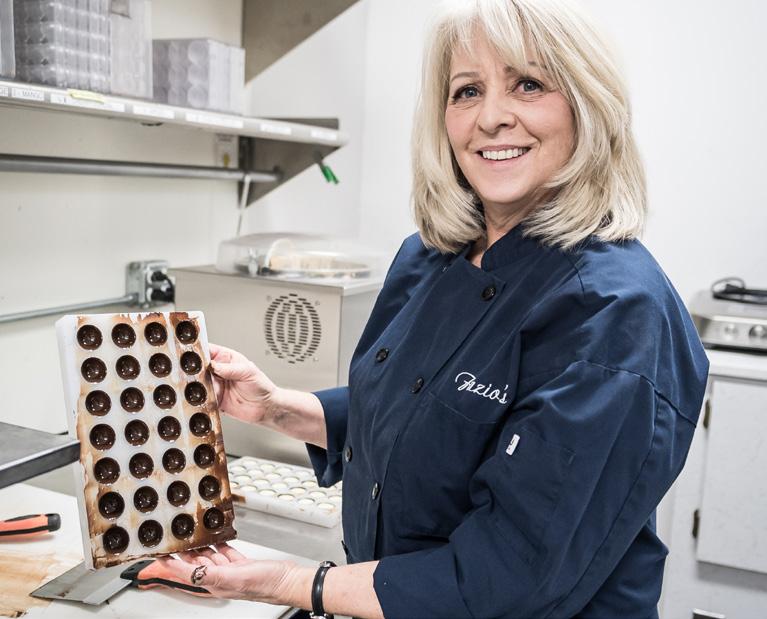
Always a foodie, Cindy Karrels started the business with her husband, Mark, after spend ing years as a flight attendant. Fazio is Cindy’s maiden name and a nod to her Italian heritage.

In addition to seasonal sweets, like the Christmas collection’s “Snow Crunch” truffle, featuring hand-painted iridescent swirls and crunchy vanilla bean ganache filling, the shop’s year-round product line includes a variety of truffles and vegan chocolates.
“There’s all different ways to work with choc olate. It’s a lot of trial and error to figure out what works best,” said Karrels. n
Excess chocolate drips out of the mold chocolatier and owner Cindy Karrels uses to make the shells for Snow Crunch truffles.

Karrels holds up a nearly completed tray of truffle shells, which must solidify at room temperature before being cooled.
Snow” candies are adorned with a handstamped white chocolate snow flake.
HEADING INTO 2023?
Station manager, OEC Group Milwaukee “Develop partnerships to foster growth and unlock the Mil waukee area’s regional potential by advising companies and organizations on their supply chain strategies. I also want to help establish Milwaukee as a logistics hub, allowing busi nesses faster access to transporting their goods.”

President, Bars & Recreation
“Giving my customers and employees ways to find joy again. The pandemic was traumatic to our industry of ‘social en gagement’ in so many ways, and we’re still reeling from it. In 2023, we need to create shared memories, escape and play more than ever before.”
Chief executive officer, Connoils “Focusing on new strategies with customers in the nutritional food and beverage industry. We have recently returned from the largest trade show in our industry. We heard loud and clear the desires of our customers for new product options. This will keep our product development department busy as we work to formulate new oil powders, incorporating DHA/ EPA and algae.”
Executive director of sales – Milwaukee market, Marcus Hotels & Resorts
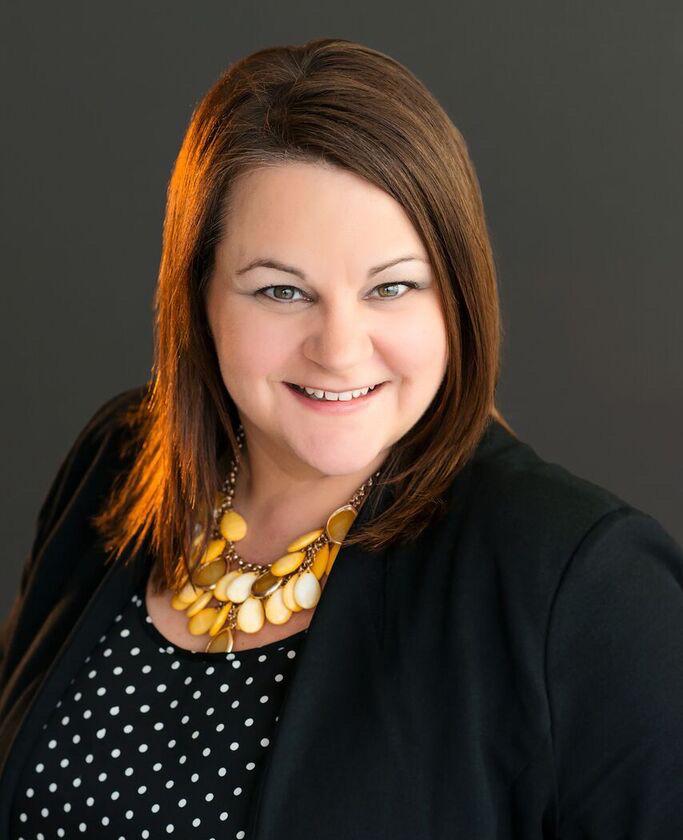


“In my new role, I’m looking forward to embracing our entire team and uncovering their strengths and knowledge. I know that being open to learning from those I lead takes my lead ership to another level. I want our, ‘We’re all in this together,’ mindset to carry forward through 2023.” n


Founder and president, Omanhene Cocoa Bean Co.
Tema, Ghana-based Niche Cocoa Industry Ltd. has partnered with Mequon-based Omanhene Cocoa Bean Co. to open a 44,000-square-foot cocoa powder processing facility in Franklin. Steve Wallace founded Omanhene in 1991, and the company went on to pioneer the production of single-origin, fair-trade choco late, manufactured bean-to-bar in Ghana – one of the world’s largest exporters of cocoa. Wallace, who now also serves as North American project manager for the nearly complete Niche Cocoa facility, first traveled to Ghana in 1978 and has returned numerous times since. n
“Delta and United Airlines offer non-stop daily flights to Accra’s brandnew Kotoka International Airport from JFK and Dulles airports in New York and Virginia. Getting around Accra (the capital of Ghana) is easy. Taxis and Ubers are plentiful and affordable, but don’t expect an air-con ditioned ride. Ghanaians are unfailingly polite and regard seniority and age with great respect. Honor that by deferring to elders in both conver sation and while waiting in lines.”

“There are many international hotels in Accra, including the Movenpick, Marriott and Kempinski. For a taste of old Gold Coast luxury, I recom mend the historic Labadi Beach Hotel, featuring a marvelous veranda – perfect for meetups. That said, I am fiercely loyal to the endearing, modest Alisa North Ridge Hotel. It is owned by a Ghanaian and has an inviting pool.”

There’s no finer way to pass a warm, languorous evening in Accra than sitting outside enjoying a platter of prawns, lobster, squid and grouper, fresh from the harbor. Slake your thirst with an ice-cold, locally brewed Star beer and all the world falls into repose. I love to go to the mar kets to shop for fresh food and take in the sights, sounds and scents. Not only does Ghana have traditional fare, such as goat and fish stews, Jollof rice and groundnut soup, but there is also a thriving Lebanese sub-culture in Accra.”

“Accra comes alive at night, perhaps because it is the coolest part of the day. If you are lucky, the evening may include Highlife music, a fusion of Afri can meter and western jazz melodies. My favorite outdoor jazz club is +233, but The Jamestown Café – nestled in one of the oldest quarters in Accra – is home to Ghana’s most progressive and bohemian artistic scene.”

AFTER BEING FORCED to wind down oper ations in 2018, Milwaukee-based tech startup CodeBaby Inc. has returned with its highly ad vanced digital avatars – and increased market demand for the product.

Then based in Colorado, CodeBaby was acquired in 2016 by Mequon-based Intelligent Digital Avatars Inc. However, just two years later, the iDAvatars operation shut down. The most significant factor in the closure was the loss of Blue Cross Blue Shield as a client, hav ing brought in more than $1 million in revenue per year.
However, iDAvatars’ then chief executive officer, Norrie Daroga, had purchased some of the company’s assets, including the Code Baby platform and technology. For the past four years, Daroga and several investors have worked to perfect the startup’s platform. The company has received more than $1 million in outside funding to support the process.
CodeBaby’s technology allows for the de velopment of intelligent digital avatars that can be used primarily in health care or educational settings. The avatars are customizable and can display compassion, empathy and a sense of humor. The virtual characters use conversation al artificial intelligence to interact with users.
“You never know when the timing is going to be correct or when things might work out,” said Daroga, now president of CodeBaby. “I still felt that there was going to be value in the company. It was just far more complicated and far more expensive than I ever imagined.”
The pandemic has given CodeBaby a boost in customers as people not only learn and seek entertainment virtually, but also increasingly use telehealth services.
“It allows us to create experiences without using high-end developers,” said Daroga. “What we’ve built is the ability to create per sonas within your avatar. Eventually, we would like to use this to address issues like mental health and areas that are harder to deal with but where virtual characters have been proven to be more effective.”
CodeBaby is also being used in educational settings. One of the company’s customers is using the platform to create avatars that teach students American history. Daroga said there are several other companies using CodeBaby for internal educational programming.
CodeBaby has established an adviso ry board to help guide it as it broadens its offerings in the remote patient monitoring and digital health fields. n


“For me, it has been the people that I get to work with every day. To work with people who have passion and strive for excellence (all while having fun) is something that is very rare.”
“I oversee and lead on all of the day-to-day operations. This mainly includes working with the department heads on sales, marketing, technical services, operations, etc.”
“I came into an industry (technology) that I knew very little about. So, a major part of my career that I had to overcome fairly quickly was learning the ins and outs of this industry.”
“From a professional side I would love to see us continue to grow on the managed services side of our business. We have consistently grown by double digits each year for the past number of years and would like to keep that momentum going. From a personal side I would love to travel outside of the U.S. again with my family – something we have not done since before COVID-19.”
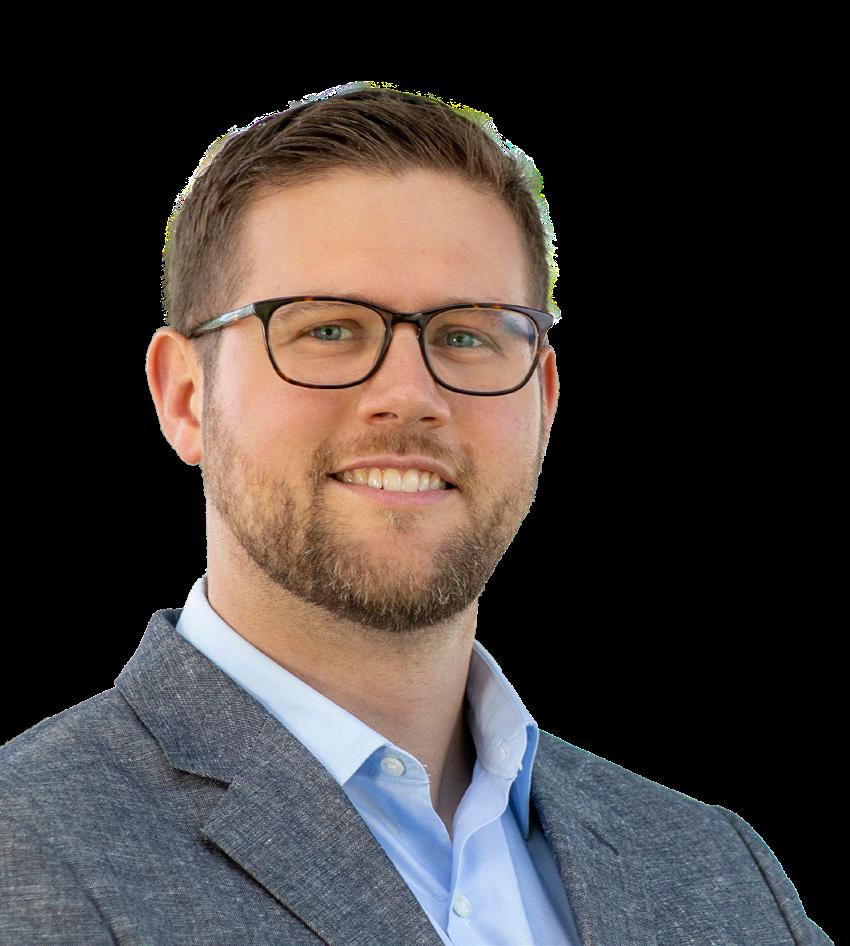
“I have a beautiful wife and four young children. So, the season of life we are in right now is focused on pouring into and training them. We are also very involved in our
LOGAN MCCOYPresident, CCB Technology
Normal, Illinois
Bachelor’s in international political economy from Carthage College
PREVIOUS POSITION: Vice president of services at CCB Technology
UnitedHealthcare NexusACO® health plans bring together Advocate Aurora Health, Children’s Wisconsin, Froedtert and Medical College of Wisconsin to connect your employees to quality care.
Our network of Primary Care Physicians act as the nexus, or trusted single point of contact, to help guide members through their health care journey. And with access to so many quality, cost-efficient providers, your employees will likely be able to find care near where they live or work.

Collaboration
Through providers working together, health outcomes for employees may be improved.
Designed to be simple and efficient PCPs aim to guide patients to the right care at the right time and setting.
Employers may save up to13% on medical premiums.¹
Savings dependent upon plan design in Wisconsin. UnitedHealth Network Access internal analysis. July 2022. Insurance coverage provided by or through UnitedHealthcare Insurance Company or its affiliates. Health Plan coverage provided by or through UnitedHealthcare of Wisconsin, Inc. © 2022 United HealthCare Services, Inc. EI221650622 9/22 20-140069
What’s kept you at Racine-based CCB for 15 years?
does your new role as president entail?
What’s a challenge you’ve had to overcome to advance in your career?
What’s one personal and one professional goal you have for 2023?
What’s the history of Leader Paper Products and this office location?
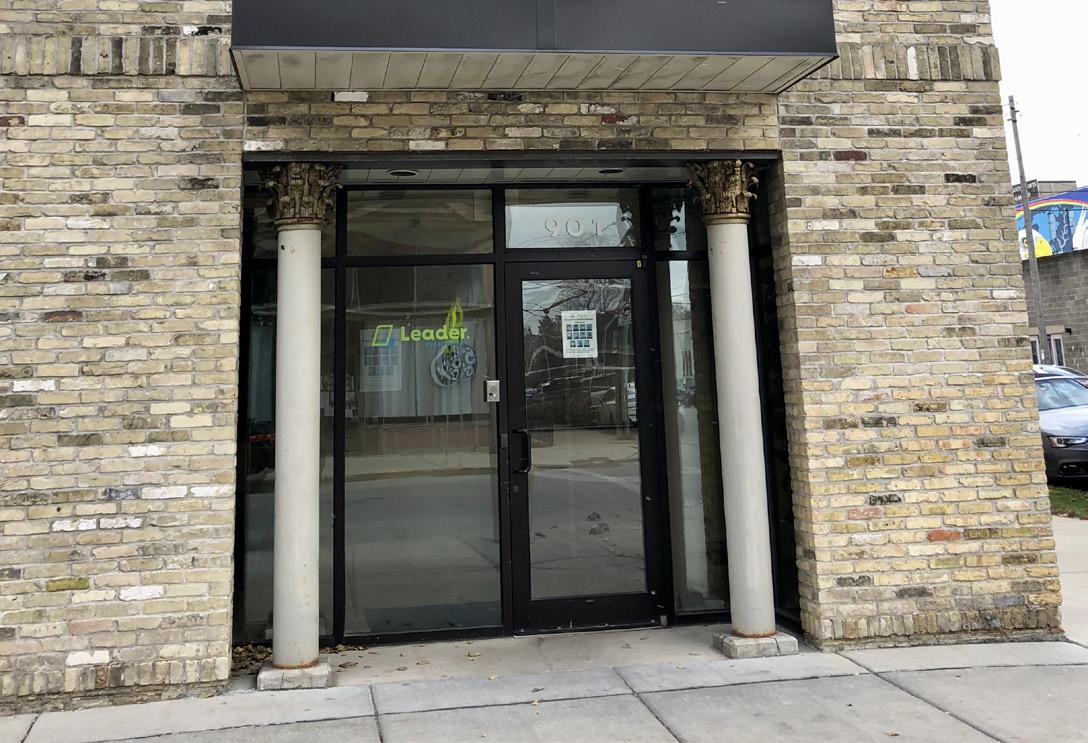
Steve Hipp, president and chief executive officer of Leader Pa per Products: “Leader Paper Products has been at this location since the 1930s. We have about 150,000 square feet here. The business started by making business cards and note cards. Later, they began engineering envelope manufacturing ma chines. Eventually, the family got out of mak ing the equipment itself, and started focusing on envelope production, which is what we do now.”
Who are your clients?
“We do a lot of work with paper merchants and distributors. We also supply a lot of envelopes to the greeting card market and big marketing companies that work on advertising cam paigns and election mailers. We also sell a lot of envelopes into the personalization space, like Shutterfly, Minted and Zazzle. This is our busiest time of year.”
What’s it like to work at Leader Paper?


“We manufacture about four and a half million envelopes per day. It is a lot of fine paper envelopes,

so a lot of different textures and colors. Basically, we take huge sheets of paper, and we run them through a die-cutting operation and die-cut what we call enve lope blanks, and then those blanks go to the envelope produc tion floor where they get glued, folded and packed. We have 20 machines and those machines sometimes run at the speed of a thousand envelopes per minute. I think it is fantastic to work here. I love the family-ori ented, collaborative environment.” n
BIZ POLL A recent survey of BizTimes.com readers. 262-363-6500 www.citizenbank.bank
IN APRIL OF 2019, the world watched in horror as one of mankind’s greatest architectur al achievements, Notre Dame Cathedral in Paris, was devastated by a massive blaze. Fortunately, a professor from Vassar College had used a new form of scanner technology to create a highly accurate 3D model of the building just a few years prior. Every detail of the 13th century building had been recorded to a digital archive, providing hope that the cathedral could be restored.
Milwaukee-based TechRender LLC, a company offering building documentation services, seeks to do the same with its scanning technology – digitally preserve historic buildings.
Dan Wilhelms, president and founder of TechRender, is no stranger to starting a business. He founded Brookfield-based Symmetry Corp. and sold it 10 years ago. The firm then ran its business out of some of the his toric mansions on the East Side of Milwaukee.
“As a building owner, I became interested in historic preservation,” said Wilhelms. “We had to adapt these buildings for modern usage. So, like many entrepreneurs, I saw a need, started as a customer and built a business around it.”
The company’s technology captures 3D renderings of build ings using digital laser scanning. This is opposed to the old-fash
ioned method of having a crew show up in person to take mea surements and photos, later using them to create a 2D CAD draw ing. That method can be labor intensive and inaccurate, Wilhelms explained.
“With historic buildings, there’s always the complaint that there’s never the right angle. Things are crooked, things are unique, things are missing. These are hard things to capture,” said Wilhelms.
TechRender specifically uses LIDAR scanners, which function like a police radar. The scanners shoot out a beam of light, which bounces back from whatever point it hits. A mirror spins around on the device and collects nearly a million points per second. Points are then recorded to create what is called a point cloud. That point cloud is then stored digitally. The point cloud is a computer model of all the recorded dots. The 3D model is accurate within a millime ter, and a model can be created within a day.
After a building is scanned, TechRender can then use the 3D model to create useful documents, such as floor plans and elevations. This can be of particular use to
those working on historic preser vation projects, as there are often no original drawings of historic buildings. Wilhelms said, at best, a building owner may have some grainy photos to work with. The 3D model gives a building owner a core base of knowledge to work off.
“It’s really hard to start a reno vation project if you don’t have any accurate drawings,” said Wilhelms. “The laser scanning solves an immediate business problem. It’s a new way of experiencing architec ture without going to the site.”

To specifically target the historic preservation industry, TechRender has introduced a new HP JumpStart Service to pro vide building owners with all the documentation they would need for a project in a cost-effective way. The 3D model allows a user to know basic pieces of information like how much square footage they have and how much of that space is usable. They can also build plans around the 3D model. Wilhelms explained traditional building doc umentation methods could cost thousands of dollars, while using TechRender is about $1,000.
The documentation that TechRender provides can help
building owners with applications to be listed on the National Regis ter of Historic Places.
“There are peculiar documen tation requirements to get on the register,” said Wilhelms. “If you get on the register, you can get significant historic tax credits for your project. It can also be a plat form for fundraising.”
There’s also an educational component to TechRender’s 3D models. If historic buildings are destroyed, these models can provide historical documentation of them.
“Digital capture of buildings is real, it’s easy and it’s afford able. It enables you to get farther down into your project to make informed, real-world decisions on what you’re going to do with a building,” said Wilhelms. n
INNOVATION: LIDAR scanners that produce 3D models
FOUNDER: Dan Wilhelms, president and founder
FOUNDED: 2021 techrender.com
PATRICK SNYDER in October was named president of Milwaukee-based BizStarts, an organization that trains and mentors new entrepreneurs. He succeeds BizStarts founder Dan Steininger, who remains involved as a board member. Snyder joined BizStarts in 2019 as executive director, following a five-year stint as executive director of the Whitewater-based United States Association for Small Business and Entrepreneurship. In 2021 alone, BizStarts helped 750 small business owners. Of that total, 92% were businesses owned by people of color, 83% were owned by women and 70% lived in low- to moderate-income neighborhoods. In a recent interview with BizTimes Milwaukee reporter Ashley Smart, Snyder shared his vision for the organization moving forward.

“My wife and I moved to Wisconsin to run the United States Association for Small Business and Entrepreneurship, which was housed at the University of Wisconsin-Whitewater. It is literally the largest organization in the world for faculty that teach entrepreneurship. At that time, Dan (Steininger) had reached out to me, and we basically set up a lunch, and he asked me if I wanted to be on the board. I thought, ‘Yeah, this is an excellent opportunity to be involved in the community that we belong in.’ Fast forward the story to almost four years ago in February; basically, I saw that the board was moving from doing scalable businesses to trying to help more community-based businesses. I got really excited about that. I got a lot of energy because it sounded like businesses just like my mother’s.”
“My mom was 14 when she moved here from Italy. She didn’t know the language, and I would follow her around while people made fun of her accent. At that time, she knew how to do hair, but beauty shops were offering $2.65 an hour to clean the floors. True entrepreneurship is about solving a problem, so she started thinking that way. Basically, there were a lot of slips and falls from people coming out of assisted living facilities. She thought, ‘What if I could just put a (beauty) shop in one of these homes, and then I would be guaranteed customers?’ She ended up signing with five different assisted living facilities and was hiring single moms and things like that. Long story short, in 1974, instead of making $2.65 an hour, she was making $600 to $800 a day. When I thought about (BizStarts), I thought about how there are people in Milwaukee who have capabilities, but they’re not given the chance.”
“The very honest answer to that question is, in other cities, with entrepreneurship comes a certain amount of carnage. There are ways that you have to hustle. There are ways that you have to compete. You’re clawing your way to the top. Milwaukee is a very goodhearted city. Instead of you clawing your way to the top, there’s a lot of people that lift you up. There are household names in this city, people like the Gardettos and the Marcus family … they don’t want to run for office. They want to help other entrepreneurs because they want to grow the community, not just their own wealth. I think that’s so unique.”
“BizStarts moved intentionally out of Schlitz Park into (St. Ann Center for Intergenerational Care-Bucyrus Campus, 2450 W. North Ave., Milwaukee) so we would be in the neighborhood. We just finished our program with the Latino community, which was held at the Farmhouse Paint & Sip on the south side. We’re working with HEAR Wisconsin to create a program in American Sign Language. Another phase of development would be to work with the Hmong Chamber and see if we can’t get this done – like how we just had it done completely in Spanish – within the Hmong community. It’s expanding capabilities to give opportunities to everybody.”
How did you know it was time to step up within BizStarts?

“As an executive director, you never make a decision that you’re going to be president. You work extremely hard, you keep all your promises and one day Frank Cumberbatch, who’s our chairperson, and Ann Hanna, who’s the past chair, tap you on the shoulder and say, ‘Hey, we think you’re ready.’ I called all my kids, and we celebrated. It was a very exciting day for the Snyder family.”
What are your immediate goals for the organization?
“What we’re learning is that we have compartmentalized types of business. So, we have food businesses, we have manufacturing businesses, we have companies that sell products to other businesses, and all the different categories require a deeper dive. We’re finding that for a restaurant business, we don’t currently
provide instruction on getting licensing or permitting or food safety. If we could do a stage two, like a next level of BizStarts, that would make us more effective. After the first of the year, we will actually have our own store (in Milwaukee’s Walker’s Point neighborhood). I think that nothing connects people like seeing (entrepreneurs) in action. The consumers will make our entrepreneurs more successful. I feel like it’s going to be a magical place.”
“I’ve hit my stride, and I’ve found my purpose. This is exactly my calling in life and (entrepreneurs’) businesses should be that also. Their business should solve a problem and they should be so passionate about solving that problem that any other product doesn’t compare.”
“There’s going to be a lot of challenges, but challenges in entrepreneurship mean you’re falling forward. As soon as you find a problem, you’re looking for creative and simple solutions to solve that problem. Over the next three years, if we keep growing like we’re growing, we’re going to have 300 to 400 businesses that need to get up and running. Right now, we’ve got a group of student mentors at Marquette University, and they get them through the program steps. How do we get 300 students? How do we get more mentors to help these companies? How do we build capacity on the back-end so we can continue to support these businesses? That’s going to be a challenge, but we’re going to fall forward.” n
The Avenue is among several recent develop ment projects in Westown.
IF YOU WERE shopping for office space in downtown Milwaukee 10 or 15 years ago and asked to look for a space west of the Milwaukee River, your broker would probably have tried to talk you out of it.
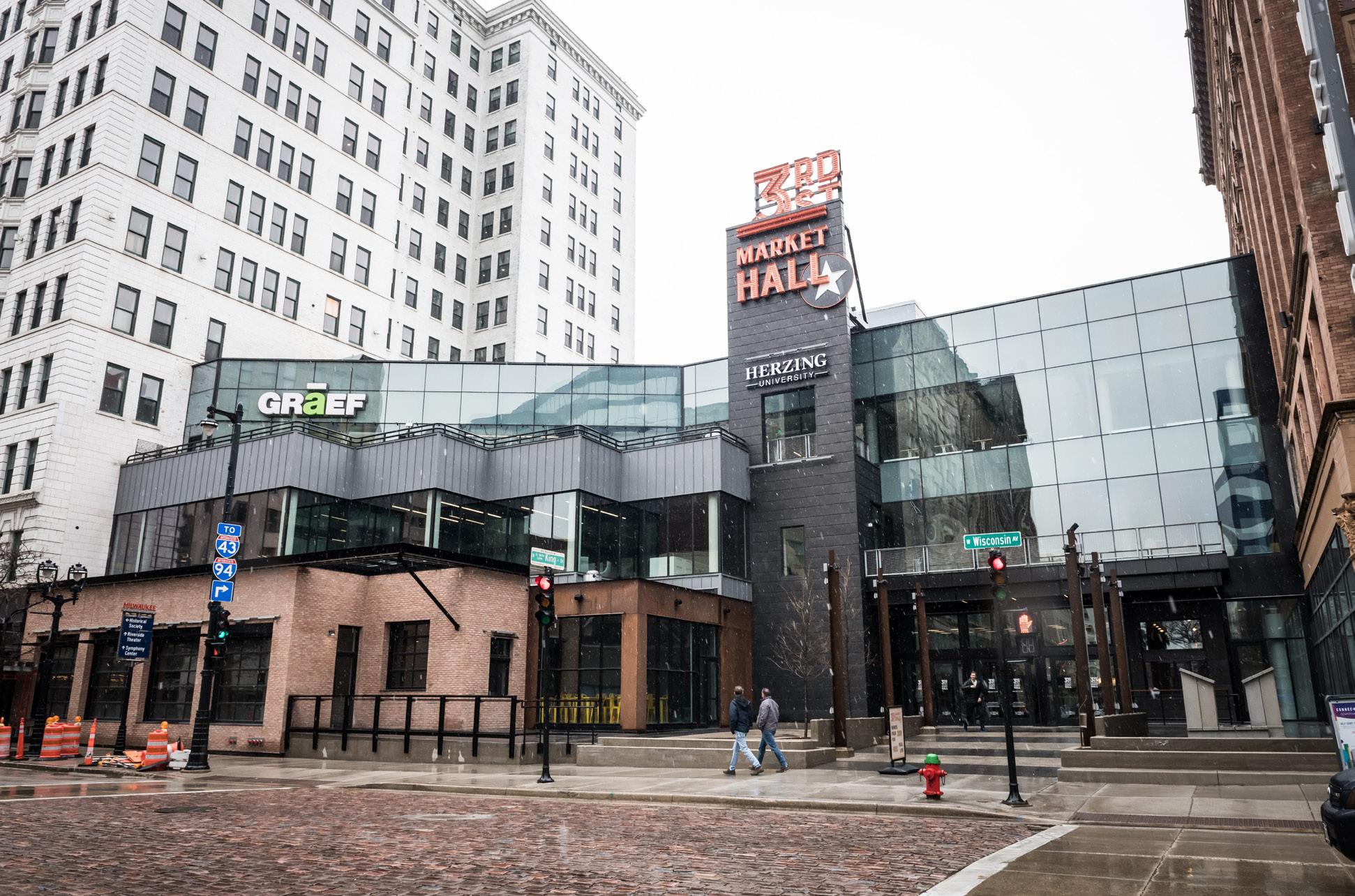

Today, looking at the amount of development Westown has seen in just the past three years – from The Avenue and 3rd Street Market Hall to the glittering renovation of the Warner Grand Theatre by the Milwaukee Symphony Orchestra and the emergence of the bustling Deer District – it’s hard to believe the neighborhood was ever con sidered low rent.
But it was.
When longtime Milwaukee real estate attorney Steve Chernof was tapped by former Mayor Tom Barrett in 2014 to form a task force to help revitalize West Wisconsin Avenue and the surrounding area, Chernof said people thought he was crazy for saying “yes.”
“I had friends that said to me: ‘Why are you doing this? You are wasting your time; it’s going to be a blot on your reputation,’” he said.
That attitude, said Chernof, of Godfrey & Kahn, was born largely out of the reputation Westown had as a forgotten and unloved part of downtown, compared to the East Town neighborhood where downtown’s class A office


The Global Water Center building in Milwaukee’s Walker’s Point neighbor hood was sold recently by an affiliate of Fond du Lac-based C.D. Smith Con struction to an affiliate of SixSibs Capital Corp. for $11.9 million. SixSibs is the investment arm of the White family, which owns Milwaukee-based Rite-Hite. The building sits directly across South Third Street from the new Rite-Hite global headquarters campus and features a 44-seat auditorium and water testing and flow laboratory.
“We are strategically trying to acquire and possibly develop real estate in the neighborhood to take advantage of the value we are creating with the Rite-Hite project,” Greg Spanos, SixSibs managing director, said of the acquisition.
Long home to the Milwaukee Water Council, the 86,156-square-foot, brick and timber office building is nearly 88% leased to 14 tenants, including Xylem’s San itaire operations and Beckhoff Automation. Originally constructed in 1904, the historic building was completely redeveloped in partnership with the Milwaukee Water Council in 2013.

How a series of catalytic projects transformed Westown from a dead zone into a downtown’s hot spot
towers are located.
“If a business came to a com mercial real estate broker looking for space and asked, ‘What about West Wisconsin Avenue?’ brokers would actively say, ‘Oh, you don’t want to do that. No one will go there,’” Chernof said. “They don’t say that anymore. Now people talk about moving to West Wisconsin Avenue.”
Part of the reason for the area’s new-found success can be traced to the efforts of the Wisconsin Avenue Milwaukee Development Corp. – the group that Chernof and others formed to help jump start redevelopment efforts.
But it can also be tied to basic market forces, such as developers running out of potential adaptive reuse projects east of the river, and the serendipity of having four key entertainment and tourism projects in the neighborhood all kick off around the same time, said Bill Bonifas, executive vice presi dent at CBRE in Milwaukee.
CBRE represented civil engi neering firm GRAEF, which moved its headquarters to The Avenue in 2019, and Bonifas and his team represented Fiserv in its lease ne gotiations to move its headquarters to the adjacent HUB640 building.
Bonifas sees the change of Wisconsin Avenue from a downat-heel, Class C office market to what it is today as one that can be traced back to those distinct developments – and a handful of apartment conversions – that together made Westown more attractive to office space seekers.
Tony Lindsay, principal of asset management at Chicago-based North Wells Capital LLC, agrees. When the private equity commer cial real estate investment firm purchased the former Bon-Ton building (now HUB640) at 640 Vel R. Phillips Ave. in 2017, the idea of securing a big-name tenant like Fiserv was just a far-off dream. But Lindsay said the company felt confident betting on the building, and on Westown.
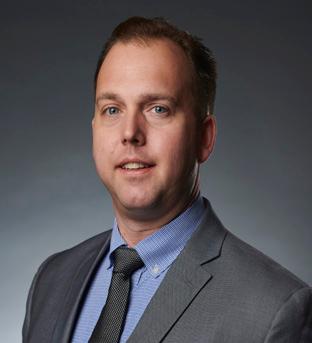
“The reality is we invested in that building because we liked the story of Westown,” Lindsay said. “Now, all of a sudden, you’re going
to go down West Michigan Street and you’re going to have Rexnord, you’re going to have We Energies, you’re going to have Milwaukee Tool, you’re going to have Fiserv, and this is all of a sudden going to be this corporate row of real quali ty, high-credit tenants.”
Asked why they decided to move to Westown, leaders at Fiserv and GRAEF had similar things to say.
“When GRAEF made the decision to move our corporate headquarters, we had full confi dence in the vision set forward to revitalize Westown,” said Pat Kressin, vice president of business development and principal of the firm. “GRAEF has a lot of pride in being an anchor tenant on this historic project.”

Bob Hau, chief financial officer at Fiserv, said the company saw a chance to be part of continu ing the positive change in the Westown neighborhood.
“We selected the downtown location because of its vibrant commercial and residential community, which complements our commitment to diversity and inclusion,” Hau added.
As the City of Milwaukee continues efforts to beautify Westown, which includes spend ing millions of dollars on a bevy of pedestrian safety and traffic-calm ing projects, it aims to capitalize on recent momentum, said Lafay ette Crump, commissioner of the Department of City Development.

“Our work is not done, and I look forward to witnessing the full potential and success of Westown in the years ahead,” said Crump. n
DEVELOPER: Zuwena Cotton SIZE: Five-story building ADDRESS: 1101-1113 W.

414-336-7116

THE 2020 DEMOCRATIC NATIONAL CONVENTION was supposed be the biggest event in Milwaukee’s history. National political conventions attract a huge num ber of visitors, make a major economic impact and bring a massive amount of me dia attention with the eyes of the world on the host city.
But for Milwaukee, the 2020 DNC was a dud. The event was mostly held in a virtual format due to the COVID-19 pandemic.
Some disappointed Milwaukee leaders hoped that the DNC would give the city another opportunity to host its convention in 2024. But then Milwaukee officials received an invitation to bid on the 2024 Republican National Convention, and they decided to go for it.
Milwaukee’s winning bid to host the 2024 RNC is arguably the biggest busi ness story of the year in southeastern Wisconsin. Peggy Williams-Smith was per haps the most engaged individual leading the city’s efforts to host the convention. In recognition of that accomplishment, she is BizTimes Milwaukee’s Best in Busi ness 2022 Community Leader of the Year.
This is the 10th year that the BizTimes Milwaukee editorial staff has selected its newsmakers of the year in five categories: Corporation, CEO, Small Business, Family-Owned Business and Community Leader. You can see our past honorees in the accompanying list.

In addition to Williams-Smith, our other Best in Business honorees this year include: Eagle Park Brewing, which seized an opportunity this year to purchase the Milwaukee Brewing Co. beer recipes; Madison-based FPC Live, which re ceived city approval to move forward with plans for an indoor concert venue complex next to Fiserv Forum in downtown Milwaukee’s Deer District, despite strong opposition from the owners of existing concert venues in Milwaukee; Mequon-based Fromm Neiman Brands, which unveiled plans for its Foxtown Brewing affiliate to build a restaurant, tap room and distillery building next to a planned downtown Milwaukee dog park (which the company is sponsoring); and Jim Kacmarcik, chairman and chief executive officer of Grafton-based Kacmarcik Enterprises, who played an integral role in Milwaukee being awarded a profes sional soccer team that will play its games at an 8,000-seat stadium to be built as part of the mixed-use Iron District development in downtown Milwaukee.
Read about these accomplishments in this special report.
Small Business of the Year: 2021 New Land Enterprises 2020 Fiveable 2019 J. Jeffers & Co. 2018 Good City Brewing 2017 Access Healthnet 2016 Rinka Chung Architecture 2015 Gehl Foods 2014 Bartolotta Restaurant Group 2013 Colectivo Coffee Roasters
Corporation of the Year: 2021 Milwaukee Bucks 2020 Milwaukee Tool 2019 Fiserv 2018 Klement’s Sausage 2017 Foxconn 2016 Direct Supply 2015 WEC Energy Group 2014 Generac 2013 Northwestern Mutual
CEO of the Year: 2021 Aaron Jagdfeld, Generac 2020 Mark Irgens, Irgens 2019 Michelle Gass, Kohl’s 2018 Peggy Troy, Children’s Wisconsin 2017 Nick Turkal, Aurora Health Care 2016 Tim Sullivan, REV Group 2015 Peter Feigin, Milwaukee Bucks 2014 Mark DiBlasi, Roadrunner Transportation Systems 2013 Paul Grangaard, Allen Edmonds
Family-Owned Business of the Year: 2021 Kohler Co. 2020 Rite-Hite 2019 Bartolotta Restaurant Group 2018 Michels Corp. 2017 Coakley Brothers 2016 Milwaukee Blacksmith 2015 Steinhafels 2014 Uline 2013 Super Steel
Community Leader of the Year: 2021 Dana Guthrie, Gateway Capital 2020 Marty Brooks, Wisconsin Center District 2019 Alex Lasry, Democratic National Convention 2018 Mike and Amy Lovell, Marquette University 2017 Joanne Johnson-Sabir, Sherman Phoenix 2016 The Baumgartner Family, Paper Machinery Corp. 2015 The Ramirez Family, Husco International 2014 Tim Sheehy, MMAC 2013 Rich Meeusen, Badger Meter
tion has been positive, Schinker said, although there was some initial worry from customers that Milwaukee Brewing products could have disap peared from the shelves.
“We saw an outpour of passion for MKE Brewing and what it means to the people in this city,” said Schinker. “The limited overlap in each brand’s product offerings allows each to coexist without hindering one another. This, I feel, is the most unique aspect of this acquisition and what influenced our decision to pursue it in the first place the most.”
Borgardt echoed this sentiment, saying he be lieves Eagle Park taking over Milwaukee Brewing Co.’s brands makes sense because both entities can exist without necessarily crossing paths. Milwau kee Brewing is known for more traditional craft beers, while Eagle Park has taken a more modern approach.
BY ASHLEY SMART, staff writerEAGLE PARK BREWING & DISTILLING CO. made one of the most newsworthy business moves within the local beer scene this year with the ac quisition of Milwaukee Brewing Co.’s intellectual property, recipes and branding.
In March, Milwaukee Brewing Co., after 25 years in business, announced plans to sell the company and all of its assets.
When Eagle Park owners Max Borgardt, Jack Borgardt and Jake Schinker learned that Milwau kee Brewing Co. would be put up for sale, they were shocked and knew they had to act right away.

“I grew up drinking all their beer, even be fore we had Eagle Park,” said Max Borgardt. “Our first thought was it’s obviously terrible to hear, but then our second thought was we want those brands. We didn’t want someone to come in from out of state or some investor that just wanted to own a brewery and do their thing … that brand means a lot to the city.”
Since acquiring Milwaukee Brewing Co.’s IP in late September, the Eagle Park team has been producing Milwaukee Brewing’s flagship beers – including Louie’s Demise, Outboard, O-Gii and

MKE IPA – under the brand’s original name, brew ing a total of 1,000 barrels of Milwaukee Brewing Co. beer, or about 330,000, 12-ounce cans, in two months.

In recognition of its decision to seize a big op portunity, Eagle Park is the BizTimes Milwaukee 2022 Best in Business Small Business of the Year. The brewer has operations in Milwaukee and Muskego. It doubled its beer production at the end of September, with annual totals slated to reach 14,000 barrels. An estimated 6,500 barrels of Milwaukee Brewing Co. beer will be produced in 2023.
“It’s definitely weird to think how that is twice as much beer as Eagle Park produced our entire first year (2017) as a business. This has now dou bled the output of our facility overnight and al lowed us to increase our production staff by 63%,” said Jake Schinker. “Accounting for growth from both brands, we expect to have an increase in our total production by 90% to 100% in 2023.”
Once the core brands have been restocked, new Milwaukee Brewing products will be intro duced. Those will eventually include a line of hard seltzers and spirits under the Milwaukee Brewing Co. name.
The public response to Eagle Park’s acquisi
“I think what we’ve done in five and a half years with Eagle Park has kind of stood for itself … with our growth and the quality of products and the innovation and other things we’ve put into our brand, (Milwaukee Brewing Co.) knew we were capable of pushing the brand forward,” said Borgardt.
Production of Milwaukee Brewing brands has been temporarily moved to Eagle Park’s Muskego facility. The company’s Hamilton Street facility on Milwaukee’s Lower East Side has been serv ing as a temporary taproom until a new Milwau kee location can be found. The search for a new Milwaukee taproom location is still in the early stages, but the team is open to any area in the city, Borgardt said.
Also in the works is a brand refresh. Milwau kee Brewing Co.’s flagship beers will continue to have the taste consumers have become ac customed to, although the cans will have a more modern design. The new design will reflect the balance of tradition and modernity Eagle Park is working to achieve.
“Eagle Park has always focused on innovation and developing new products. Now with acquir ing MKE (Brewing), it’s more of a focus on tradi tion,” said Schinker. “Striking a balance between both ideologies is a challenge but having both brands makes us more flexible than ever before. We hope this revitalization will bring MKE the modernization it deserves while staying true to its strong roots spanning back 25 years to the for mative years of craft beer in Milwaukee.”
trust took center stage.
A group of opponents formed an entity known as Save MKE’s Music Scene LLC to fight the project, using city meetings – intended to review land use and zoning requirements – as a platform of pro test, arguing that Live Nation’s tremendous indus try influence will result in a significant number of acts performing at the new venue to the detri ment of Milwaukee’s existing concert venues.
Supporters of the project pushed back, tout ing the anticipated positive impact on the down town economy, workforce, tourism industry and live music scene. City officials’ stance remained that issues of competition and antitrust were not for them to sort out and ultimately the Common Council gave FPC Live the green light.
BY MAREDITHE MEYER, staff writerOn Nov. 1, the Milwaukee Common Council approved zoning standard changes related to a $50 million indoor concert venue complex that Madison-based concert promoter FPC Live plans to build in the Deer District in downtown Mil waukee. It was the final government hurdle in what had become a nearly year-long saga for FPC Live – and its Madison-based parent company Frank Productions – as it seeks to secure a foothold in the Milwaukee market.
Set to break ground this winter for an early 2024 completion, the planned project includes two concert halls – one capped at 4,000 people and the other at 800 – to be built on the northeast section of the Milwaukee Bucks-owned former Bradley Center site, just south of Fiserv Forum.

FPC Live expects to book 135 shows annually at the new venue complex, drawing artists of all genres and all styles – including those who may have overlooked Milwaukee in the past.



“Artists love new rooms,” said Charlie Gold stone, president of FPC Live. “We’re building it to be state of the art, not just for the patrons but for the artists, and so to give artists an amazing, new, positive experience in a city that maybe they ha ven’t been to – or maybe they have been to a lot and love – it’s something all artists want to take advantage of; they want to try out the new facil ities, they want to see the crowds respond, they
want to put their stamp on the nice new venues in markets.”
The city’s approval marked 11 months to the day since FPC Live first announced the project –originally planned for a site near the Summerfest grounds in the Historic Third Ward. That pro posal, backed by a lease deal with Summerfest operator Milwaukee World Festival Inc., sparked a wave of vocal opposition from neighborhood groups concerned about noise, traffic and safety. Those concerns were quelled in May when FPC Live dropped plans to develop its project at the Third Ward site.
Meanwhile, a separate wave of opposition had gained momentum – one driven by other lo cal concert promoters and venue operators who feared FPC Live’s expansion could cannibalize the city’s existing music scene, made up heavily of smaller, independently owned concert venues. Those concerns largely stemmed from Beverly Hills-based Live Nation’s majority stake in Frank Productions. Live Nation, the parent company of Ticketmaster, is considered the world’s largest con cert promoter and in recent years has come under fire – including last month by the U.S. Justice De partment – for what some see as a monopoly over the multibillion-dollar live music industry.
So, when FPC Live announced in early June it would press forward with its plans for the venue complex at a new location under a deal with the Milwaukee Bucks, issues of competition and anti
Amidst the noise – and countless hours of pub lic discussion with residents, business owners and city officials – FPC Live didn’t lose sight of its vi sion to invest further in a local music scene ripe for growth. For that reason, FPC Live is the Biz Times Milwaukee 2022 Best in Business Corpora tion of the Year.
“We went through the paces, we learned, we built relationships, we expanded relationships and we stayed true to the focus…,” said Joel Plant, chief executive officer at Frank Productions. “We recognize the opposition that we ran into. We un derstand the basis of the opposition. We simply disagree with the notion that Milwaukee is done growing and should maintain what it has been within this space and industry.”
Pushing the project through the city’s approv al process was a huge milestone, but as Plant ac knowledged, there’s still a building to be built, and that’s “a feat in and of itself.”
Hiring for the venue’s 18 full-time staff and hundreds of part-time workers will begin as soon as construction breaks ground, he said.
A project labor agreement with the Milwau kee Building & Construction Trades Council will help create create 150 to 200 full-time jobs during construction, and a labor peace agree ment with the Milwaukee Area Service and Hospitality Workers Union furthers efforts by the Bucks and the Deer District to increase liv ing-wage employment opportunities for service workers.
“We’re not just going to build a building that’s great for the Milwaukee music scene, we’re going to build it and operate it in a way that’s great for the city of Milwaukee,” said Plant.
Like many manufacturers, Grafton-based Kapco Metal Stamping saw a surge in demand in recent years as consumers emerged from the COVID-19 pandemic ready and willing to spend their money.
Increased demand and supply chain chal lenges across the country and around the world meant manufacturers found themselves con stantly changing production and shipping plans. Lean manufacturing ideas went out the window and businesses scrambled to deliver on customer requests.
It would be hard to fault any manufacturer for keeping their focus inside their own four walls during the chaos of recent years. But Jim Kac marcik, chairman and chief executive officer of Kacmarcik Enterprises, a holding company that includes Kapco and several other businesses, has continued to embark on new initiatives and proj ects both inside and outside the company.
Externally, Kacmarcik partnered with Keno
sha-based Bear Development to announce plans for a $160 million mixed-use development near the Marquette Interchange in downtown Mil waukee. The project will be anchored by an 8,000-seat soccer stadium that will be home to a team in the USL Championship league. Kacmarcik is heading up the ownership group for the team, which is scheduled to begin play in 2025.
The Iron District MKE development also in cludes plans for a full-service boutique hotel, a 3,500-capacity indoor concert venue operated by The Pabst Theater Group, a 140-unit residential development and retail space.
“I didn’t quite imagine (the project) to be as po tentially significant as it is, but now we feel totally that it is – I don’t want to say game changing – but it is a very significant piece of Milwaukee’s future,” Kacmarcik said in an October cover story in Biz Times Milwaukee.
Within his own companies, Kacmarcik has continued to press ahead as well. In October, his team launched the Kacmarcik Center for Human Performance, a new entity within Kacmarcik En



terprises tasked with allowing people to flourish and reach their fullest potential.
KCHP has three main areas of focus. It works on learning and development for employees with in Kacmarcik Enterprises and also does social im pact work, aiming to bring learning and develop ment efforts to nonprofits and organizations that may not otherwise have access to similar services. Finally, the team will also be developing products and services related to KCHP’s work. The organi zation has a goal of impacting 1 million lives an nually.
“The work that a lot of teammates do in the fac tories is extremely difficult work, it’s hard work, I’ve done it. I’ve been there. Manipulating metal parts in machines and stuff like that is tiring, and they deserve a different kind of approach,” Kac marcik said of why he chose to invest differently in the development of his employees.
“Certainly, for us, this has been a time of great reflection and reimagining workers’ happiness and just what makes the difference,” he said.
For continuing to invest in the wellbeing and development of his employees while also seeking to improve and grow the greater Milwaukee re gion, Jim Kacmarcik is the BizTimes Milwaukee 2022 Best in Business CEO of the Year.
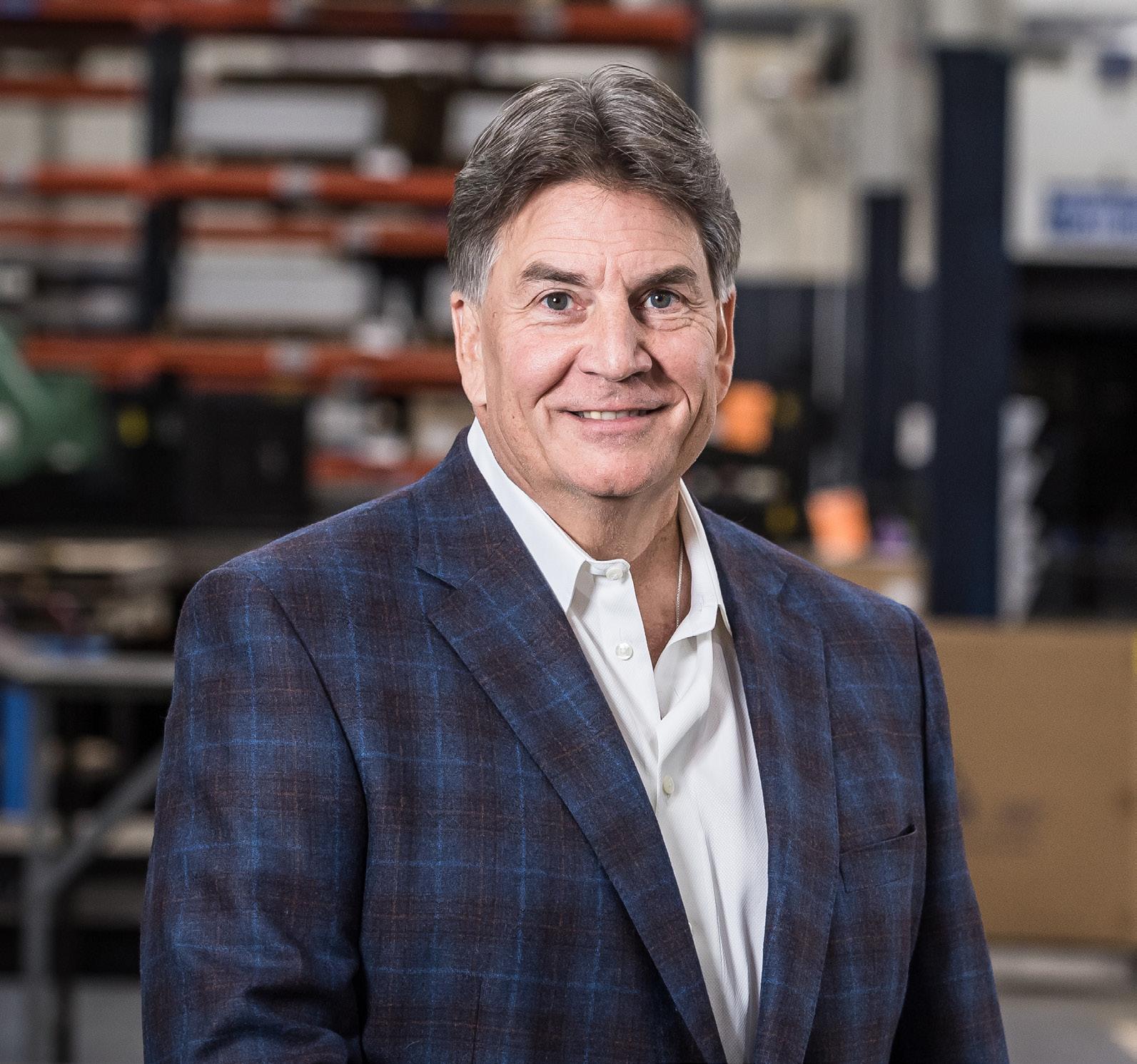
Speaking at the 2022 BizTimes Nonprofit Ex cellence Awards program, Kacmarcik described why he wanted to take on a bigger mission with the Kacmarcik Center that goes beyond the learn ing development of his own employees.
“I’m a guy who believes that what our individ ual possibilities could be or what a business could be, that we somehow limit ourselves,” he said. “We think we can get to this peak, and that’s what we kind of feel like, ‘Wouldn’t that be something?’ With this team, we have no mountain peak, we can do so many things.”
Kacmarcik also described how he fostered philanthropic efforts at Kapco, a company that has been heavily involved in a number of charities and was the 2019 Corporate Citizen of the Year at the BizTimes Media Nonprofit Excellence Awards.
“I began to be a little bit more purposeful as to the people I started to hire and surround myself with. Everybody’s got a different mission and a different approach. Inside our walls, we talked about it a lot. It’s part of our corporate metrics, the things that we do, and you can’t really push that on anybody, you’ve just got to lead and hope that more and more people follow,” Kacmarcik said.

to the lakefront each fall,” Glassford said. “Fromm’s involvement with Milwaukee Downtown and the Historic Third Ward BID’s dog park project will complement Petfest by providing a 365 day a year ‘dog district’ in the heart of downtown.”
Designed by Milwaukee-based GRAEF, the dog park plans call for separately fenced small and large dog areas, water stations, upgraded lighting, the potential for public art, opportunities for community programming, prominent donor recognition, and other pet amenities. The overall project would also be tied together by a nearly 400-foot segment of new public RiverWalk.
“This is a generational opportunity to rein vent a long-dormant, underutilized but highly visible area of downtown into what will be a true destination that enhances downtown’s quality of life and bridges the gap between the Historic Third Ward and Westown neighborhoods,” said Matt Dorner, economic development director of the Milwaukee Downtown Business Improve ment District.
BY CARA SPOTO, staff writerMEQUON-BASED DOG FOOD maker Fromm Nieman Brands Inc. and its affiliate Foxtown Brewing delighted beer and dog lovers alike in early November when it announced plans to develop a 28,000-square-foot, three-story build ing in downtown Milwaukee that will include a restaurant, taproom and distillery, and plenty of pup-friendly outdoor spaces.
Dubbed Foxtown Landing, the development will be built on a long-vacant site northeast of West St. Paul and North Plankinton avenues along the Milwaukee River and is being planned in conjunction with the proposed Downtown Dog Park site, which would be located on an ad jacent parcel.

“Milwaukee is rich in history, as is the Fromm brand and our family,” said Tom Nieman, presi dent of Fromm Family Pet Food, when the Fox town project was announced. “When we learned about the dog park project, we began exploring the larger opportunity to develop a true ‘dog dis trict’ where people and their pets can gather along the river at the nexus of where the Historic Third
Ward and downtown meet. With dog ownership rapidly increasing in recent years in the greater downtown area, we see this as a natural fit for us and a game changer for the city of Milwaukee.”
The new brewery and its connection to the dog park is a way to expand the Fromm Family Foods presence in downtown, while introducing more diners to Foxtown Brewing, said Jim Glass ford, marketing and business development advi sor at Fromm Nieman Brands. Foxtown currently has a single location in Mequon.
In recognition of its continued growth across the region, Fromm Nieman Brands is the Biz Times Milwaukee 2022 Best in Business Fami ly-owned Business of the Year.


Fromm Family Foods is the title sponsor of the future off-leash dog park, which will be locat ed on a long vacant site under the I-794 freeway between the Milwaukee River and Plankinton Avenue, just north of the Foxtown Landing site and south of West Clybourn Street.
“Fromm has a 10-year history of hosting Fromm Petfest at Henry Maier Festival Park in conjunction with Milwaukee World Festival. (That one-day event) brings thousands of pets and people
While Fromm Nieman Brands has been in the specialty pet food business for generations, Foxtown Brewing is still a relatively new venture for the family. But what the two efforts share, said Glassford, is a “vision of being the best, not necessarily the biggest.”
“Both brands provide high-quality, careful ly crafted products to pet parents and beer (and food) lovers. Whether it’s pet food or beer and pub fare, the common mantra is quality first,” he added.
For both businesses, 2022 was a year of con tinued adjustments in the wake of the COVID-19 pandemic.
“Foxtown managed through the challenges of 2022 by focusing on quality products, customer service and safety for staff and customers alike,” Glassford said.
Fromm managed through supply chain chal lenges “by doubling down on the long-term rela tionships” with its suppliers, he said.
“We did have to take price adjustments on our pet foods, but we maintained a consistent source of supply for our distributors, retailers and con sumers throughout 2022,” Glassford said. “As we look forward to 2023, we see the potential for continued pressure on material and energy costs, however, we are confident we will weather these challenges and continue to provide high-quality dog and cat foods and treats to our pet parents.”
by Williams-Smith, for the RNC site selection committee to see Milwaukee. The tour includ ed stops at Fiserv Forum and the Deer District, the Wisconsin Center, the Riverside Theater, the Summerfest grounds, State Fair Park and dinner at Lake Park Bistro.



“We were able to showcase true Milwaukee hospitality,” Williams-Smith said.
Later, smaller groups of RNC officials came to examine Milwaukee’s facilities.
Williams-Smith and her team then made one more trip to Washington, D.C. for a final pitch.
Milwaukee Mayor Cavalier Johnson, Mil waukee County Executive David Crowley and Republican Sen. Ron Johnson were all part of that meeting.
“It was surreal,” Williams-Smith said. “I had to take a moment and step back because I had the biggest Democrats in our city with the Republican senator, and we were all talking about why Mil waukee should be chosen. It was just amazing.”
BY ANDREW WEILAND, staff writerWHEN REPUBLICAN National Committee chair woman Ronna McDaniel announced that the party’s 2024 national convention would be held in Milwaukee, one of the first people she acknowl edged was Peggy Williams-Smith, the president and chief executive officer of VISIT Milwaukee.
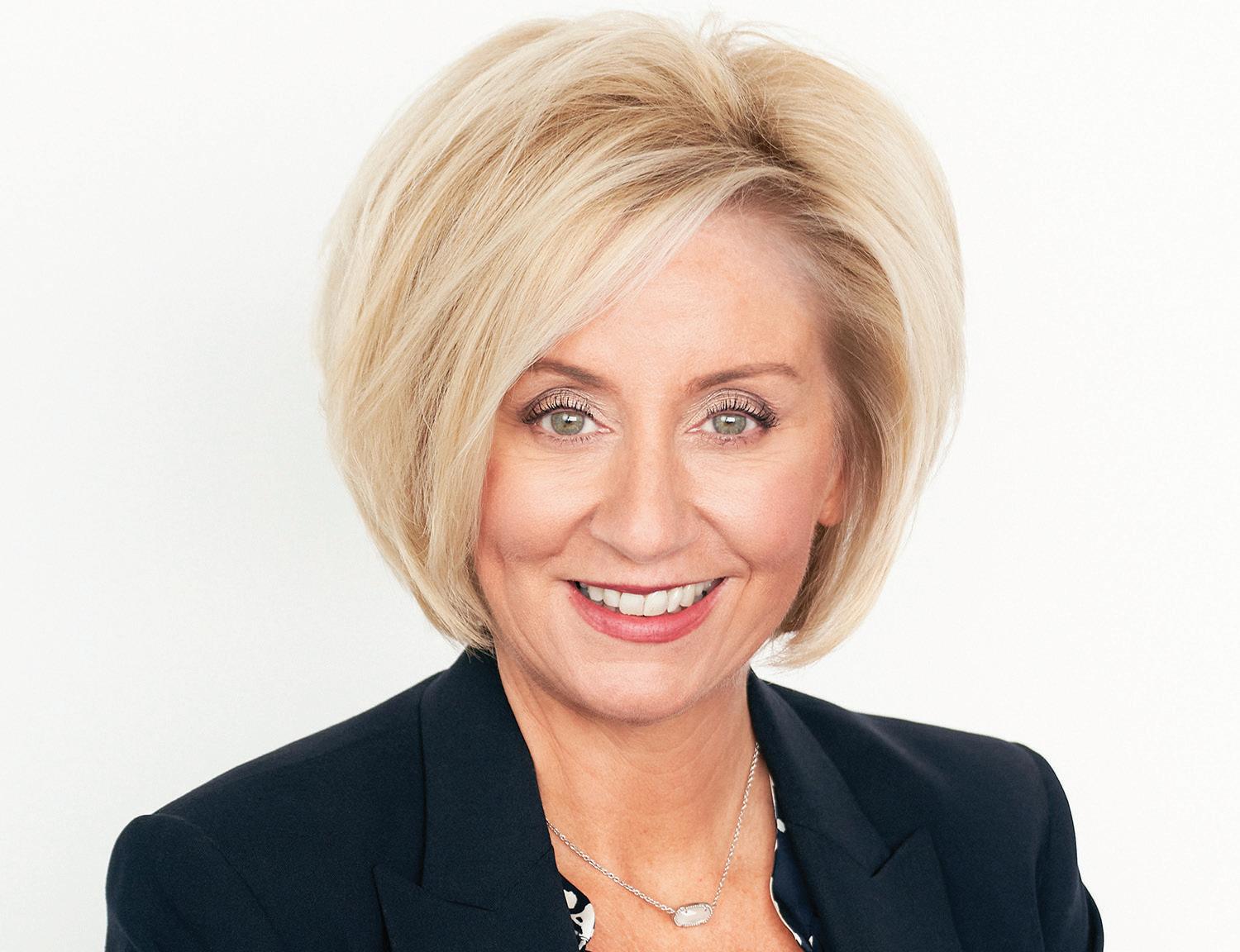
“If I were any city in the country, I’d be trying to steal her away, she’s amazing,” McDaniel said of Williams-Smith.
There were several people who played a vi tal role in Milwaukee’s successful bid to host the 2024 RNC, but none more significantly than Wil liams-Smith, who was involved in the process from start to finish. For her efforts to win the bid for Milwaukee, Williams-Smith is the BizTimes Milwaukee 2022 Best in Business Community Leader of the Year.
The journey that led Milwaukee to land the 2024 RNC perhaps began with the city’s surpris ingly successful bid to host the 2020 Democratic National Convention. Expected to be the biggest event in Milwaukee’s history, the 2020 DNC was a bust for the city when it became a mostly virtual event due to the COVID-19 pandemic.
But Milwaukee’s work to host the 2020 DNC left it prepared to make a successful bid for the 2024 RNC.
Hoping for a re-do, Milwaukee officials had planned to bid on the 2024 DNC. But in September of 2021, Williams-Smith received an RFP for the 2024 RNC. She called then Mayor Tom Barrett’s office, which had also received the RFP, and they said Barrett wanted to pursue the event.
So, Williams-Smith began working to pull to gether all of the information needed to complete a bid and started to assemble a bipartisan group of business and civic leaders to back the bid.
Gerard Randall, vice chair of the Republican Party of Wisconsin and a VISIT Milwaukee board member offered his assistance. He went with Wil liams-Smith to Washington D.C. for a two-day “in terested cities” event for civic leaders to meet with RNC officials about the 2024 convention.
Barrett was in Washington at the time and joined them at the event. About a dozen cities were interested in hosting the 2024 RNC at that point.
After that, Williams-Smith gathered more support for the bid, including former Gov. Scott Walker, current Gov. Tony Evers and former Trump administration chief of staff Reince Prie bus. Her team submitted Milwaukee’s bid. Mil waukee was picked as one of the finalists and was invited to present at the RNC’s winter meeting in Salt Lake City. A large group of Milwaukee busi ness and civic leaders made the trip.
That was followed up by a site tour, organized
The RNC narrowed its final options down to Milwaukee and Nashville and ultimately picked Milwaukee.
Now, Williams-Smith is working to pull off the 2024 RNC, while still promoting the city as a desti nation for other events.
VISIT Milwaukee estimates the economic impact of the 2024 RNC will be between $180 million to $200 million, but it’s also a huge oppor tunity to showcase the city on a global stage, Wil liams-Smith said.
“I think the biggest impact beyond the parties that will be thrown throughout the week, is that there are journalists coming from all over the world. And when they’re not covering the con vention floor, they’re going to be exploring our city, and they’re going to be telling stories about our city. That is where we think we come out on top after the convention leaves,” she said.
The $456 million expansion of the Wisconsin Center will be complete in time to be used for the 2024 RNC and the event will help promote Mil waukee as a destination for other conventions, Williams-Smith said.
“To secure this convention the year we open the (convention center) expansion is just huge for us,” she said. “I’ve spoken to my counterparts in Philadelphia, Cleveland, Minneapolis (that have all hosted national RNC conventions). It truly does boost lead generation for other meetings and con ventions.”
THERE’S BEEN PLENTY of movement within Milwaukee’s craft beer scene this year, and sever al newcomers are hoping to carve out their own space in the market.

By the end of 2021, there were 230 craft brew eries in Wisconsin, including six new operations that opened from 2020 to 2021, according to data from the Brewers Association. That doesn’t include the spate of brewery openings that hap pened in 2022, including Torzala Brewing Co., Su permoon Beer Co. and Pilot Project Brewing, all in Milwaukee.

These new openings may leave consumers wondering how it’s possible for so many craft breweries to remain operational. Some of Mil waukee’s best-known and well-established brew eries say it’s the smaller size of breweries opening these days that allows for so many operations in the market
“It’s kind of crazy because there’s been so much movement in the industry in Milwaukee in the last six years,” said Andy Gehl, co-founder and presi dent of Third Space Brewing. “It’s a totally different time now versus when we opened.”
When Third Space first opened in 2016, the brewery sought to bring beer styles that hadn’t yet gained traction with local beer drinkers. Most breweries were making European – spe cifically German – styles of beer. Gehl said Mil waukee did not see the same movement toward “hop-forward” beers other cities did. With its pro duction facility and taproom at 1505 W. St Paul Ave. in Milwaukee’s Menomonee Valley, Third Space aims to make those modern-style beers but in an approachable way.

Third Space has now grown to a size that comes with its own challenges. As the fifth largest craft beer brand in Wisconsin, Third Space must deal with the rising costs of packaging, shipping, labor and equipment. Smaller neighborhood breweries can simply sell their beer over the counter to cus tomers in a glass at a markup.

“I do think we are starting to reach that sat uration point. What we’re seeing in other cities and states is there are breweries closing across the country right now,” said Gehl. “The pandemic was a huge hit to a lot of businesses but they, including us, got a lot of relief. Now that we’re past that, but we’re
still in an inflationary environment, it’s really put ting these business models to the test.”
For the owners of Enlightened Brewing Co. in Bay View, there is a sweet spot for how large they want the business to grow. While microbreweries can sell their beer on-site for a higher profit margin, there is a limit to how much profit they can bring in based on what equipment they have and how much beer they can produce with it. For breweries that decided to grow, equipment costs can become burdensome and retail distribution often enters the equation, causing yet another expense.
“I feel like that pinch from both large and small makes me reluctant to invest in another 100,000 square feet and a couple million dollars in equip ment and start that regional distribution,” said Tommy Vandervort, co-owner and founder of En lightened Brewing Co. “Where we are right now, we still have room to grow. We feel that in this 1,000- to 5,000-barrel production range is kind of a sweet spot.”
Enlightened is now in its third brewery space. The craft brewer’s current home at 2020 S. Allis St. is 14,000 square feet. It is substantially larger than
the brewery’s prior 1,800-squarefoot, ground-floor production site and taproom on South First Street. En lightened Brewing’s original location was inside the Lincoln Warehouse building, also on South First Street.
Vandervort believes if the city continues to invest in neighborhoods not necessarily seen as “hot spots,” there will be space and buildings for new breweries to move in. Finding available space is an increasingly dif ficult task in popular neighborhoods like Bay View or Riverwest. He said it’s not an issue of consumers sup porting new breweries, but instead a problem of new businesses securing equipment and financing.
“There might be these market conditions that get in the way of peo ple starting out,” said Vandervort. “I don’t think there’s a demand prob lem. For better or worse, Milwaukee is a thirsty city.”

One bright spot of so many small er breweries opening is it forces each one to declare what its special ty strives to be, said James Larson, co-owner and director of operations at Enlightened Brewing. The busi ness has now experienced two craft beer booms. The first took place be tween 2016 and 2017 and the second is happening now.
“We were never really worried about it back then because it seemed like even if we were creating the same styles as somebody else, we had a different approach to the way that we made beer,” he said. “If you give two breweries the same exact recipe on paper, you’re going to come out with two different beers.”
He said Milwaukee has been un derserved by the craft beer market over the past 30 years or so, a last ing impact of legacy macrobrewers’ stronghold. The shift in consumer tastes toward craft beer – and away from the likes of Miller – leaves plenty of room for newcomers to Brew City.
“I think the days of rapid growth and conquering a lot of markets out side of your home territory and being purchased by a bigger brewer are gone,” said Vandervort. “I think that does sort of temper our expectations
and give us a better picture of what the sweet spot is.”
For Hacienda Beer Co., which re cently changed its named to Hacien da Taproom & Kitchen, a months-long redesign of its business model and menu has allowed the microbrewer to further cement its niche.
“In Milwaukee right now, we see such a saturation (of craft breweries). You can throw a rock and hit a brew ery on any corner almost – it feels that way,” said Ashley Turner, chef at Ha cienda Taproom & Kitchen. “We just have a lot of folks that are producing a lot of great beer. So inevitably, you learn that you find your niche, or your point of view, and you really have to stick to it … in order to make it clear what you’re doing in the marketplace.”
Hacienda has focused primarily on hoppy beers with higher ABV (al cohol by volume), and experimenta tion is the name of the game – even if it means broadening the horizon beyond beer. The brewery recently rolled out a selection of seltzer-based cocktails at its bar-restaurant on Mil waukee’s East Side. Made using a neu tral-flavored hard seltzer – produced exclusively for Hacienda by Sheboy gan-based 3 Sheeps Brewing – and a variety of house-made mix-ins, the idea is to appeal to a wider array of customers, including those who don’t like the taste of beer or can’t drink beer due to dietary restrictions. The new cocktails might be uncharted territory for Hacienda, but the idea is derived from the same emphasis on bold flavor and high-quality ingre dients that its customers know and love, said Turner.
“If you don’t have a point of view that’s clearly defined, and you don’t have a client or guest base that’s go ing to support it or believes in it too, then you’re going to get lost in the wash,” she said. “… If you’re opening a craft brewery today, you really need to have spent the time to consider what you are bringing to the table that your neighbors around you ar en’t, and that’s becoming increasingly hard. … Some of the newer guys have had maybe a tougher time getting elbow room and clearly articulating what they’re doing here. But also at the same time, people love craft beer and that’s not going away.” n
 By Denise Craig, Marketing Manager, Current Electric Company
By Denise Craig, Marketing Manager, Current Electric Company
THE MILWAUKEE BUSINESS community has a history of innovative entrepreneurship—companies determined to be industry disruptors. Current Electric has embraced being a renegade since its inception.
“We started Current Electric in 1983 to help our neighbors with their electrical needs by providing qual ity service for a fair price,” explains Chuck Smith, presi dent of Current Electric. “I also dreamed we would be an educational foundation within the electrical industry.”
As small business owners, like Smith, strategize to stay at the top of their industries, they invest in discov ering industry best practices and consistent team-build ing exercises.
“To stay at the forefront, we deeply invest in team training to improve our customer experience,” says Smith. “When discussing the next phase of electrical we speak highly about solar, LED lighting, and backup electrical systems keeping our team members and com munity energized and illuminated.”
Current Electric started being a renegade solar in staller 20 years ago when solar made no economic sense. Now solar energy is a business opportunity that reaps
on-balance and off-balance sheet benefits. A solar pho tovoltaic investment:
» Increases the value of a business
» Creates tremendous cash flow and EBITDA im provements
» Lowers operational costs, and locks rates in for 30+ years
» Produces annual dividends between 10% and 20+%
» Yields an increased value for a business for sale
It is a great opportunity for portfolio diversification with a significant and steady return on investment. It also serves as a best practices tool for marketing, sales, and recruitment.
» Businesses investing in solar grow faster on aver age.
» Mega trends point to customers preferring sus tainability minded businesses.
» Businesses invested in solar have better employee retention.
» Businesses invested in solar have an advantage re cruiting new employees.
Smith believes the Current Electric legacy is to create a sustainable future for the community and the environment. As he strategizes ways to keep his small business at the forefront of the electrical industry, he encourages small business owners to evaluate how solar energy can help them excel in their respective industries and support their future growth and success.
Visit currentelectricco.com/solar/commercial-solar to learn more about Current Electric’s commercial solar services.
• Worldwide total capacity for cold storage was 8.6 million sq. ft. in 2020.
• U.S. has 3.7 billion cubic feet of gross refrigerated storage capacity
• U.S. cold storage real estate footprint is approximately 225 million sq. ft.


COLD STORAGE construction is projected to reach $18.6 billion in value by 2027 — an increase of 13.8 percent per year, according to Emergen Research. Additionally, reports indicate that the total market for cold storage will reach $212 billion by 2025, yet capacity is only projected to grow by 1 percent per year through 2023.
Some reasons for this cold storage deficit are: Capacity is strained by transportation backlogs, inflation, and labor shortages;
• Additional capacity is needed as stores respond to market demand for fresh products;
• Frozen food continues with strong demand, existing capacity will not become available to handle needs; and
• 78% of existing facilities were constructed before 2000 and are outdated.

According to Ken Morris, senior vice president of Brokerage at Morris Southeast Group, the aging infrastructure means demand for newer facilities is great. Food distributors and processors are faced with the decision to lease, build a greenfield site, or renovate.

A refrigerated cold storage warehouse can be just as functional and operational for non-refrigerated use. If designed knowing that, in the future, it may be removed. There are specific design concepts that, if not known, will be applied incorrectly, causing maintenance and operational inefficiencies as well as potentially catastrophic failures. Due to the complex nature of these facilities, it is extremely important to work with an experience and qualified design-build contractor.
Because the cold chain crisis is expected to continue, and possibly worsen over the next few years – driven in part from spiking demand and a significant supply shortage – it is critical for a company to proactively assess its cold storage capacity needs now so that the capacity is available when needed. This is especially critical given the development timeline of 14 to 24-plus months. Stay informed about the cold storage capacity options in your market to make the right decision for your operations.
We take for granted the importance of food from farm to fork.
§ The health of our community impacts the ability to bring food to consumers.
§ Proper safety measures in the workplace will enhance production capabilities.
§ Well designed and maintained food facilities will stand the test of time.
Find insights into design and construction services as you decide to build, lease, or renovate. Scan the QR code to find your solution.

As 2022 comes to a close, BizTimes Milwaukee managing editor Arthur Thomas caught up with Rose Oswald Poels, president and chief executive officer of the Wisconsin Bankers Association, to talk about how the state’s banks performed this year, and the outlook for 2023. The following conversation is edit ed for length and clarity.
BIZTIMES: What kind of year has 2022 been for Wisconsin banks?

ROSE OSWALD POELS: “Overall, it has been a really good year for the banking industry. We continue to make a lot of loans, we have a lot of liquidity, deposit balances are still high, they have been trickling off in the last couple of months, but for most of the year they’ve remained at unusually
high levels, so that just means that banks have that much more money to lend out into their commu nities.
“As I mentioned, we are starting to see a little drop off in deposit balances. It’s gradual, certainly not anything drastic, but I think as people are re ally feeling the pinch of higher prices in food costs, energy costs, things that really hit our pocketbooks every day, we are seeing consumers spending their
excess savings to pay for some traditionally basic necessities.”
Does that work in both directions? People are keeping money in savings because there’s infla tion, and they know, ‘I’m probably going to need that money,’ so they’re less likely to go spend it on discretionary things. At the same time, they start eating into their savings because costs are going up.
POELS: “Yeah, I think with the dramatic increase in interest rates and sort of the impact that’s hav ing on prices generally, the second half of this year, we’ve seen consumers be a little more cautious in their spending and using their money to pay for necessities. Credit card balances are going up, but that doesn’t mean they’re not still shopping. I think retail numbers are still looking very strong and certainly from a bank’s perspective, loan defaults, for example, and credit card defaults, are still very, very low, so there’s no immediate concern that consumers are imprudently spending their money. They’re being cautious, at least here in Wisconsin, and our banks are seeing that reflected in regular payments on all types of loans.”
What has the rising interest rate environment meant for bank finances?
POELS: “For most banks, I think they’ve been able to take advantage of the greater net interest mar gin. ... The loans that are variable rate in nature, they are able to reprice those as interest rates have gone up, and they haven’t had to increase their de posit interest rate payouts at the same pace. With competition being what it is, rates are going up for CDs and savings accounts to benefit consumers, but they’re not going up at quite the same pace that loan rates are. In the short term, banks are certainly benefiting from that greater spread in net interest margin after frankly living with years of having really tight net interest margin, so it’s a little bit of fresh air for our members to see that spread grow a little. How long it will stay really does remain to be seen. Are we going to be in a recession next year? Will consumers struggle to keep pace with their loan payments like they’re doing today?”
Talk about that potential recession for 2023. How is the health of banks heading into this period of uncertainty?
POELS: “Banks today are in a very strong, healthy position. I mentioned earlier the high deposit bal ances, overall capital levels are very healthy going into what could be a recession next year, so they are in a very strong position to weather some hur dles in the form of greater consumer loan defaults and payments. They also are very well diversified.”
POELS: “During this year, overall lending has been strong. Definitely saw the decline in home mort gage lending, so those numbers quarter-over-quar ter and even year-over-year are down. Ag lending, generally, is a little bit down as well. That’s not completely surprising. Farmers also are in a very healthy, strong cash position, and so a lot of farmers have chosen to use their savings instead of borrow ing to put crops in the ground or to pay for some equipment. And then commercial loan demand continues to be up a little bit.
“I think heading into 2023 – now that we’ve had the election and for the most part things are gener ally status quo – I think people at least understand what the next few years politically look like, which always brings a little more stability to business owners and their decision making. Looking ahead to 2023, we expect business loan demand to con tinue to remain steady. I think we’ll continue to see slower home mortgage lending and interest rates continue to rise. The Fed is certainly forecasting they’re going to keep going up, it does put pressure
on the housing market.
“Overall, bankers are predicting a recession next year, so I think they’re also making sure they manage their own financial statements to be able to withstand some of that. To the extent that may be there’s a little less loan demand than what the last few years have seen – particularly in home mortgage lending – they have to make adjustments maybe on the expense side in order to help miti gate and keep their overall financial picture strong. They’re definitely making adjustments, but as I said earlier, they’re very well positioned for this poten tial recession.”
On lending practices and willingness to lend money, how has that evolved over the course of this year and where do you see that going next year? Are there going to be generally tighter con ditions going forward?
POELS: “The broad guidelines of credit underwrit ing haven’t really changed for banks throughout time, frankly, but obviously people’s individual situations do change, and so, as they go through a risk review of a business borrower or a consumer borrower, they’re looking to make sure that that in
dividual is in a good financial position themselves. Do they have a good business plan? How long have they been in business? Do they have savings that help withstand some emergency situation? Are there supply chains still affecting this particular business, and what does that look like for their rev enues ahead? And then doing some kind of stress testing against the business itself on how well they’re able to withstand a recession if one would come.”
Anything else to highlight about the outlook for banking heading into next year?
POELS: “The only other area is the merger activity of the banking industry. This year, we definitely saw a pretty healthy pace of merger activity; we had 12 announced mergers this year of a Wiscon sin bank. Looking ahead, I do think we’ll continue to see mergers occur, I do think it will slow down a bit because of the economic environment and as it becomes a little more uncertain what a bank’s own balance sheet might look like, which affects pricing of a bank when they’re looking to sell. So, I expect M&A activity to continue, but maybe not quite at the pace that it was this year.” n
You may already support a high-performing school and you know about the great work occurring with many of the Milwaukee’s highperforming schools as they are preparing our future workforce. However, if you are curious and want to learn more, join us at the Milwaukee Education Spotlight event on February 23, 2023.

BizTimes Media’s Milwaukee Education Spotlight event will introduce and connect high-performing schools in Milwaukee and their leaders with the broader business community in the region. It will feature education and business leaders and schools that are having success across education sectors. They will share insights about what works, existing challenges and how businesses can become more involved.
Krysta DeBoer, Executive Director, Center For Urban Teaching
Brittany Kinser, President/Executive Director, City Forward Collective
Anthony McHenry, CEO, Milwaukee Academy of Science
Robb Rauh, CEO, Milwaukee College Prep
Andrea Roberts, Program Administrator, GPS Education Partners
1709 Landmark Dr. Cottage Grove, WI 53527
Contact: 800-236-5560
FinancialWellness@summitcreditunion.com
SummitCreditUnion.com/FinancialWellness
The stronger people are financially, the stronger we are as a community. That’s the driving principle behind every credit union. At Summit Credit Union, we live that commitment by providing free, nationally recognized financial education to hundreds of thousands of people, Summit members and nonmembers alike.
Invest in your team, at no cost
That leads us to something you don’t get from a financial every day a way to invest in your own people (and at no cost!). Our Financial Wellness for Employees by Summit program invites employers to partner with us to help make sure everyone is as good with their own money as they would be with anyone else’s.
Happier, healthier employees
A 2022 Wellness Barometer Survey by BrightPlan indicated 72% of employees reported that they are stressed about their finances, which in turn has affected workers’ mental and physical health as well as workplace productivity.
Financial Wellness for Employees by Summit helps people face their financial realities with confidence. And that pays off for both the employer and the employee, who is happier and healthier (and more productive) at work and in life!

Easy, customized program
This is a customized, easy-toadminister program for companies that want to lead the way in employee benefits. For example, in fitting the program to your company’s needs, we might include on-site coaching events to address your employees’ overall areas of interest. At the same time, we would offer online, on-demand education that’s tailored to each unique individual. That flexibility to deliver top-notch financial education to your employees at home or in the workplace at no cost is empowering.
And empowerment is what financial wellness is all about.
 Insured by NCUA
Insured by NCUA
Each year, BizTimes Media recognizes top innovators and entrepre neurs in southeastern Wisconsin.
At the recent Innovation + Entrepreneurship Forum, Wayne Oldenburg, founder of Glendale-based Oldenburg Group was named the Lifetime Achievement Award winner. He joins a prestigious list of past BizTimes Media Lifetime Achievement Award winners including Harry Quadracci of Quad/ Graphics, Robert Kern of Generac, George Dalton of Fiserv, Stephen Marcus of The Marcus Corp., Sheldon Lubar of Lubar & Co., Michael Cudahy of Mar quette Electronics, real estate developer Gary Grunau, Valerie Daniels-Car ter of V&J Holding Companies Inc., and Jon Hammes of Hammes Co.
Oldenburg started Oldenburg Group in 1981. Over the years, the company has made mining equipment, commercial lighting and military products. At one point in the late 1980s and early ‘90s, the firm made the Inc. 500 list of the fastest-growing companies in America for five straight years. Portions of the business were sold in 2006 and again in 2016 but the lighting business remains. Oldenburg has given back, too, through board service and by providing free office space to nonprofits.
Theresa Nemetz, the founder and president of Great Lakes Shore Ex cursions and Milwaukee Food & City Tours, received the Regional Spirit Award. Nemetz’s businesses showcase the best of Milwaukee to thou sands of visitors annually and she has grown the operation to other cities around the Great Lakes.
ENTREPRENEURSHIP AWARD WINNERS INCLUDE:
» Jeremy Fojut, co-founder and CEO, Like|Minded
» Justin Nicols, founder and CEO, Sift Healthcare
» Glenn Reid, founder and CEO, Marathon Machines Inc.
INNOVATION AWARD WINNERS INCLUDE:
» Advanced Ionics

» Rapid Radicals Technology
» Wearable Technologies
Read more about the Lifetime Achievement, Regional Spirt, Entrepre neurship and Innovation award winners in this special section.
FROM SPONSOR: MESSAGE FROM SPONSOR:
As Wisconsin’s largest family-owned financial services company, we’re proud of the legacy we’ve built, serving families and businesses for over 50 years. What matters most is doing what’s right – for our customers, associates and our communities. Our roots are here; our focus is here; our decisions are made here.
Johnson Financial Group is a privately owned financial services company offering business banking, wealth and insurance solutions through Johnson Bank, Johnson Wealth and Johnson Insurance Ser vices.
Our business team is honored to serve you and looks forward to connecting soon. For more information visit, JohnsonFinancialGroup. com/business.
MATT HASS VP, Small Business Banking Manager 262.523.8272 | mhass@johnsonfinancialgroup.com
Meissner Tierney Fisher & Nicholss.c. has an exceptional history of providing high-quality legal services for over 170 years. With a so phisticated practice committed to careful and effective legal repre sentation across a broad spectrum of clients, we maintain a reputa tion for both competence and integrity. The firm represents its clients in a wide variety of matters, ranging from the challenges of a start-up enterprise to the opportunities and pitfalls businesses encounter, and ultimately to smooth succession. We provide clients with critical ad vice and judgment to help them make sound business decisions to protect and grow their companies.
SCOTT T. REIGLE
414.273.1300 str@mtfn.com | mtfn.com
JAMES M. SOSNOSKI
414.273.1300 sjm@mtfn.com | mtfn.com
SUPPORTING SPONSOR:
OLDENBURG GROUP INC. founder Wayne Oldenburg has ample advice to share with local business leaders – rang ing from establishing trust with banks to recruiting highly-skilled employees.
For him, before building a business came building character.
“Stay humble,” said Oldenburg, who spent nearly two decades as a lawyer specializing in mergers and acquisitions prior to founding Oldenburg Group in 1981. “It’s better to assume humility than to have it thrust upon you.”
Oldenburg received the Lifetime Achievement Award at the BizTimes Me dia Innovation + Entrepreneurship Forum in December.
He gives credit for both his person al and professional development to the Young President’s Organization, a global network of chief executives that holds leadership seminars and courses.
“That was the biggest educational
resource for me, and I encourage any entrepreneur to check it out,” Oldenburg said.
Oldenburg Group was a manufac turer of mining equipment, commercial lighting and military products. At one point, the company made the Inc. 500 list of the fastest-growing companies in America for five consecutive years from 1987 to 1991. The company ranked 20th in 1989.
To scale to full operations, Olden burg needed money – and lots of it. What he quickly found out was that bank officials trust people before they trust faceless corporations.
“An advantage I had back then was that my banks were local. You knew the people … so you were able to borrow money,” said Oldenburg, who remained the only shareholder in the business un til bringing in his son in 2013. “Because of that, I never had to bring in outside
shareholders or go to venture capital.”
What he did need to bring in was fresh-faced talent. But Oldenburg says he made a mistake in trying to “keep the payroll as low as possible.”
“It was wrong,” Oldenburg said. “The advice I would give to any entrepreneur is to pay as much as you need to get high-quality people. Bringing (talented) people in is the most important thing that can be done.”
The reason why is simple: While he’s learned to teach employees new skills on the job, one skill that he can’t impart is self-motivation, because that must come from within, Oldenburg said. That’s where rigorous performance reviews come in – every six months.
“We do 360-degree reviews, and they’re pretty brutal at times,” Oldenburg said. “We’ll take a retreat, ask a series of questions about each individual, and put the answers up on the whiteboard.”
Reviews like this have been a part of the company since its inception, guiding future business decisions. In 2006, Old enburg Group sold its coal mining equip ment business to Joy Global Corp. (now Komatsu Mining) for $140 million, but it kept its division that made machines used in hard-rock underground mining. In 2016, it sold its underground mining equipment and defense businesses to a New York-based private equity firm.
The company kept its commer cial lighting equipment division, Glen dale-based Visa Lighting. Oldenburg continues to serve as chief executive officer of the business, which supplies performance engineered products used in the architectural lighting industry.
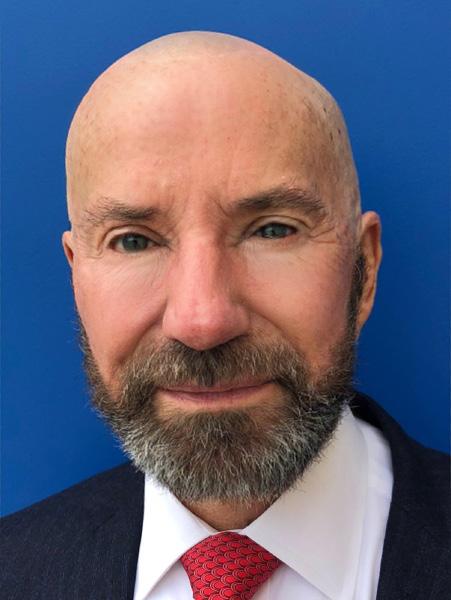
Throughout it all, innovation in Old enburg’s businesses remained mar ket-driven, not internally driven, he said. In other words, it was his goal to “stay close to the customer.” For example, Old enburg holds discussion groups where customers offer feedback on products and direction of the business.
“You should make what the custom er wants,” Oldenburg said. “Our custom ers will even sketch out designs for the equipment that they’re looking for to communicate with us.”
Oldenburg has also committed to serve the broader community. His past board service includes the board of trustees at University School of Milwau kee, Boys & Girls Clubs of Greater Mil waukee, Junior Achievement, Lakeland College, The Milwaukee Ballet, United Performing Arts Fund and the YMCA of Metropolitan Milwaukee.
For years, he has also provided rentfree space in Visa Lighting’s Glendale office building to three local nonprofits: Girls on the Run Southeastern Wisconsin, SHARP Literacy and, ABCD: After Breast Cancer Diagnosis, which was found ed by his late wife, Melodie Wilson, to provide one-on-one peer support to people affected by breast cancer, and where Oldenburg serves on the board as past-president. Those organizations are able to use the money they save on rent to further their mission.
“The advice I would give to entrepre neurs is to start giving back as soon as you can,” Oldenburg said. “I give money, but it’s also important to give time.”

SINCE LAUNCHING a local tour compa ny in 2008, Theresa Nemetz has been in the business of showing off the best of Milwaukee.

Milwaukee Food & City Tours start ed as a side hustle for Nemetz, whose local roots date back to the early 1900s when her great-grandparents immi grated to Milwaukee from Santa Flavia, Sicily. Eventually, the business grew into a full-time gig as it rode the wave of mo mentum within the local tourism industry over the past decade.
But when the COVID-19 pandemic decimated the global tourism industry in 2020, Milwaukee Food & City Tours lost 100% of its annual revenue. At a time when it might have been tempting to throw in the towel, Nemetz did the opposite.
She quickly found ways to sup plement business, shipping Milwau kee-themed care packages to customers across the U.S. and going to market with a new brand, Milwaukee Fudge Co. In addition, Milwaukee Food & City Tours acquired Chicago City Tours in 2021.
Then, in early 2022, the operation that Nemetz and her team had cultivated reached a new height, becoming what’s now a multi-million-dollar portfolio of companies.
Building off the momentum and post-pandemic return of Great Lakes cruises – which saw Milwaukee’s re cord-setting 33 port calls and 13,610 national and international visitors this season – Nemetz launched Great Lakes Shore Excursions. The company orga nizes all on-shore activities and tours for six different cruise lines voyaging to port cities in Wisconsin, Michigan, Minnesota and Illinois. One of its clients is Switzer land-based cruise giant Viking, which entered the Great Lakes market this year.
In its first season, Great Lakes Shore Excursions serviced a total of about 35,000 cruise passengers, and the com pany has scaled from about 15 part-time tour guides to now 250 across the Great Lakes region.
“It’s been incredible, and it’s far exceeded our expectations, in terms of
both opportunity as well as how much hard work it is to really be a pioneer in this area,” said Nemetz in an August in terview with BizTimes.
Launching and scaling a new com pany at the same time is not without its challenges.
“To be able to scale to what we needed to do, not only did we need to grow in Milwaukee but we needed to grow in other port cities along the Great Lakes where ships were visiting. In many of these cities – they’re very small cities – the infrastructure has not existed to be able to serve those cruise ships. … Some of the towns that we’re visiting have 500 to 600 people that live there full time, and the cruise ship is coming in and vir tually doubling their population in that day.”
Collaboration with other businesses plays a key role in crafting the experi ence cruise passengers are looking to get out of what, for many, is a first for ay into fresh-water culture. Great Lakes Shore Excursions works with hundreds of other businesses, including tour opera tors, hotels, restaurants, transportation companies and experts on local history and nature, and that’s a highlight for Nemetz, who received the Regional Spirit Award at the BizTimes Media Innovation + Entrepreneurship Forum in December.
“This is really an award for our entire community coming together to be able to show off Milwaukee and the different communities,” said Nemetz in a recent interview. “We saw people smiling on the cruise ship docks, and we saw peo ple who were in the community, whether they were working for us or working in a gift shop or at a local museum or restau rant, and they took the time to talk to (visitors) about the community and ask them genuinely how they are liking Mil waukee. … We’ve been able to show off that Milwaukee hospitality and I think it’s really shown through in everything the community has done … to step up and show off Milwaukee to its visitors.”
Asked where she sees room for im provement within the Milwaukee area and its business community, Nemetz said there’s a need for more confidence in the region’s accomplishments and as sets and emboldenment to seize more opportunities for growth and progress. Her motto is to always say “yes.”
“A lot of times people say, ‘Oh Mil waukee can never win an (NBA) champi onship.’ But we did,” she said. “And so, it’s really finding a way to be able to open the door to opportunities and be open to things that maybe we haven’t done before but could make a really positive impact on the community and region.”
“IT’S REALLY FINDING A WAY TO BE ABLE TO OPEN THE DOOR TO OPPORTUNITIES AND BE OPEN TO THINGS THAT MAYBE WE HAVEN’T DONE BEFORE BUT COULD MAKE A REALLY POSITIVE IMPACT ON THE COMMUNITY AND REGION.”

To learn more about how we can help your business, visit JohnsonFinancialGroup.com/grow-my-business.
MATT H. Business Banking Products and services offered by these Johnson Financial Group companies: Johnson Bank, Johnson Wealth Inc. and Johnson Insurance Services, LLC.Like|Minded | Milwaukee
Founded: 2021 | Employees: 5 likeminded.ai
Milwaukee-based Like|Minded provides an AI-powered software platform to help con nect individuals within organizations, enabling the formation of lasting, meaningful rela tionships. The founding team of Jeremy Fojut, Benjamin Juarez and Angela Damiani started the company in the height of the COVID-19 pan demic, understanding the world of work had changed and the way to build relationships with co-workers would change, too.
What needs are you addressing with your product/company?
Jeremy Fojut, co-founder and chief executive officer: “The challenge Like|Minded addresses is the time-consuming, inefficient and costly nature of cultivating workplace con nections. Workplace connections are also often hindered by physical distance, especially in the current, more remote workforce. However, Like| Minded has been able to automate this pain point and foster deeper belonging in company cultures, which has always been our goal.”
What would you consider to be your break through so far?
“The most significant breakthrough for any startup is usually not the product, but rather the customer renewals. For example, our earliest clients have all renewed their sub scriptions to Like|Minded, which is the ultimate sign that you are on to something.”
What’s been your mindset when overcoming setbacks?
“One of my superpowers is not getting ahead of myself. This is my sixth company, and I know there will be plenty of highs and lows sometimes — and occasionally they all happen within an hour. Being able to keep a level head and tackling each setback as it comes has been helpful in overcoming any roadblocks we might experience.”
Sift Healthcare | Milwaukee
Founded: 2017 | Employees: 26 sifthealthcare.com

Milwaukee-based Sift Healthcare pro vides health care customers with advanced analytics and data science to improve the pay ment process. Since starting the company in 2017, founder and chief executive officer Justin Nicols has grown the business to 26 employees and raised nearly $13 million in funding.
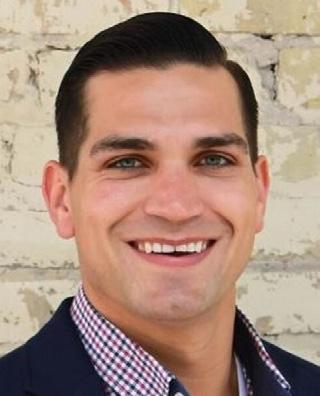
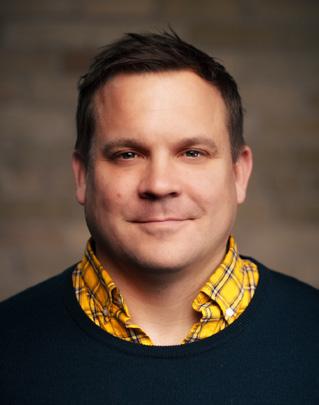
What was the point where you knew you would launch the company and what was the biggest hesitancy or concern you needed to overcome to do it?
Justin Nicols: “I founded Sift to fill a gap in the health care payments space. While de veloping a mobile payment app for health care, I observed the staggering amount of employee time devoted to the processing and collection of medical bills and noted dollars wasted because of disparate data systems and human capital-intensive workflows. With my background in data-driven e-commerce, I understood how predictive analytics would revolutionize the process.
“My biggest hesitancy in founding Sift Healthcare was being able to build a worldclass data science team. We’ve been lucky to find incredible talent here in Milwaukee. Our team is innovative, brilliant and truly world class.”
What would you consider your breakthrough so far?
“Our health system clients can’t get enough of the analytics we provide. We knew our data science and machine learning were impactful, but hearing from our clients how much they rely on our intelligence is a huge affirmation, as well as seeing the results in terms of hard-dollar savings to them.”
What’s the number one thing needed to sustain a culture of innovation and/or growth?
“Communication. Our team is in constant communication, and everyone has a voice. We take the time to get buy-in, to hear opin ions and meet regularly. The more we com municate, the more we’re on the same page.”
Marathon Machines Inc. | Milwaukee
Founded: 2015 | Employees: 5 marathonlaundry.com
Glenn Reid’s background is in computers and software. He helped launch iMovie while working as director of engineering and con sumer applications at Apple, but since starting Marathon Machines he has brought two new combined washing machine and dryer models to the market. Beyond combining functions, the machines also leverage technology to provide data to users and building owners.
What was the point where you knew you would launch the company and what was the biggest hesitancy or concern you needed to overcome to do it?
Glenn Reid, founder and chief executive officer: “It took two years of research into the category to decide to launch the company, the first new U.S. appliance company founded in over 50 years. Could a startup really compete with Whirlpool? I am a computer scientist, not a manufacturing executive. Nowadays, all machines are controlled by computers, and I realized that my expertise made us compet
itive with companies with decades-old tech nologies.”
What are the next key steps in the development of your company and/or product?

“The product is finished and shipping; the next step is growth into the sales chan nels. We need to raise funding to go to mar ket in a big way.”
What’s the number one thing needed to sus tain a culture of innovation and/or growth?
“Irritation is the mother of invention. If you’re happy with the way things are, you won’t innovate or grow. Be restless, be an noyed by the status quo.”
What’s your biggest lesson learned since founding your company?
“Mindset really is a deeply-rooted thing, and there is a huge difference in mindset be tween Silicon Valley and the Midwest, particu larly around risk and innovation.”
REIDMilwaukee
Founded: 2017 | Employees: 18 advanced-ionics.com
Milwaukee-based Advanced Ionics Inc. is developing a green hydrogen electrolyzer for industrial hydrogen producers and users. The company’s system combines breakthrough electrolyzer technology with on-site waste heat, allowing companies to achieve sustainability without sacrificing profit.

What are the next key steps in the develop ment of your company and/or your product?
Chad Mason, chief executive officer: “One, demonstration projects being deployed next year with key industry partners in petro chemicals, energy services and ammonia. Two, obtaining longer-term operating data for our systems, which prove reliability to customers.”
What do you wish you knew before starting the company?
“Raising funding is much more difficult and time consuming than anticipated. It’s a big drag on the speed for a company to execute.”
What’s been your mindset when overcoming setbacks?
“One, continue to push forward even when it’s difficult. Two, never stop seeking creative solutions. Three, talk to other people such as advisors, mentors, and other entrepreneurs. Four, embrace competition and see setbacks as an opportunity to learn and improve.”
What’s the number one thing needed to sus tain a culture of innovation and/or growth?
“Be a rebel. Challenge existing dogma and groupthink. Encourage critical feedback amongst employees. Break down hierarchies and rigid reporting structures. Keep technical innovators in leadership roles and always en sure their buy-in.”
Milwaukee
Founded: 2016 | Employees: 3 rapidradicals.com
Paige Peters started Milwaukee-based Rapid Radicals Technology based on her graduate school research on an approach to wastewater treatment that combined technologies on new applications. Her initial proof of concept has turned into larger and larger pilot projects, grant funding and other accolades, including winning the Governor’s Business Plan Contest.
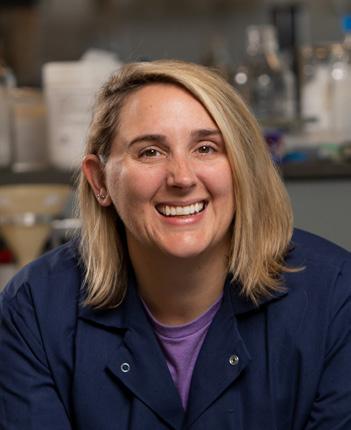
Paige Peters, founder and chief technology officer: “A decentralized, high-rate wastewater treatment solution, targeting at the elimination of sewer overflows and base ment backups during intense storm events. We can meet discharge permit requirements with our technology 22 times faster than con ventional wastewater treatment.”
What are the next key steps?
“Last November, we received a $1 million National Science Foundation Small Business Innovation Research award to build a big ger version of the pilot. ... That new treatment plant will actually be implemented at a re mote location, so we’ll learn the challenges of operating end-of-pipe, decentralized, remote wastewater treatment to treat actual sewer overflow water, that’s a really big step.”
What’s your mindset for overcoming set backs?
“Anytime we feel like we get stuck on something … we stop, we build some hypoth eses and then we go talk to 30 people. … As long as we’re responding to a market pull, we’ll always be able to do something right and a lot of that comes with our ability to be wrong, to take a step back and look at some thing wholistically.”
Hartland
Founded: 2020 | Employees: 5 full time and 1 part time wear-tech.com/usa
Hartland-based Wearable Technologies Inc. aims to disrupt the wearable technology market by providing a way to protect loved ones from preventable accidents. After losing his 2-year-old daughter in a tragic accident, Deepak Arora, founder and chief executive officer of Wearable Technologies, began looking at the number of lives lost each day. The company has since developed wearable devices that use artificial intelligence and ma chine learning to detect, predict and protect against hazards.
What need are you addressing with your product/company? Is that the same as when you started or has it changed over time?
Deepak Arora: “We are addressing an is sue where countless lives are lost annually to preventable accidents. There have been a few attempts at fixing the problem, but none have come close to a completely innovative way to resolve this issue.”
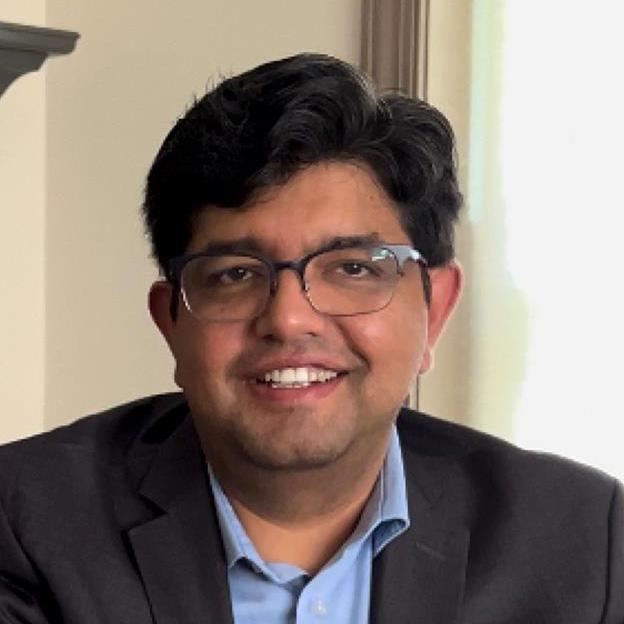
What are the next key steps in the development of your company and/or your product?
“We are currently in the beta phase and are looking to partner up with a few pilot or beta sites for our technology. The thought is to collect valuable feedback from these users and enhance our offering before we launch it into the market.”
What’s been your mindset when overcoming setbacks?
“I tend to see setbacks as opportunities to improve, whether getting rejected by an investor or having challenges making our technology work the way we want it to. The mindset is simple: keep calm and continu ously improve. There will always be setbacks along the way, but as long as we keep our eyes on the prize, we will most likely make it to the success side.”
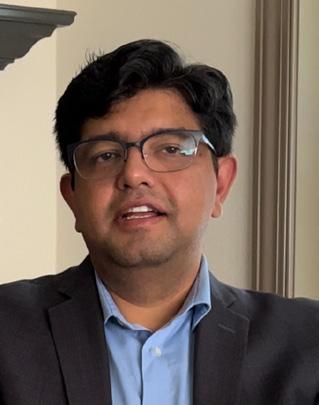
Our mission is to become the technology of choice for improving the health and safety of vulnerable populations; a conviction driven by the unfortunate incident involving a young child who is none other than my daughter, Mahi. This innovation is my tribute to her and all the lives lost to such incidents.
wear-tech.com/usa

Presents:

What lies ahead in 2023?
Make plans to attend the 22nd annual Economic Trends breakfast event on January 26, 2023, for an analysis of how Inflation, a potential recession, workforce challenges, interest rate increases, and geo-political issues will affect the business outlook in 2023.














Featured Speakers:
2023 (1) (2) (3) (4)

Thursday, January 26, 2023 Italian Community Center 7:00-7:30 – Registration & Networking | 7:30-10:30 – Program & Breakout Sessions Register Now! Biztimes.com/trends Economic Outlook| Employment Trends| Manufacturing| Hospitality & Tourism
Economist Michael Knetter Ph.D., will kick things off with a macro-economic outlook. Dr. Knetter will be followed by leading industry experts who will provide their perspectives for what to expect in 2023 and how to prepare for a turbulent 2023. Seating is limited – register today at biztimes.com/trends.


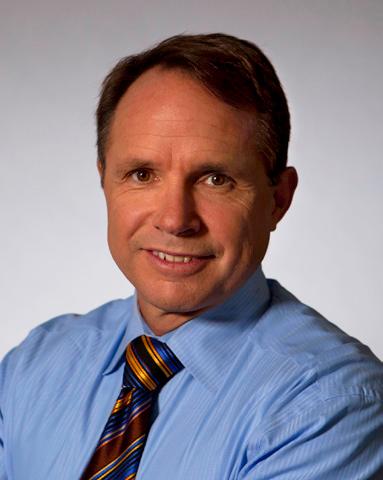
for children and adults with mental
• Crisis and Residential Services Outpatient Mental Health Centers for Independence.


Rachel Leahy-Hilker, director of clinical operations and case management for the Milwaukee Center for Independence, is a team builder and has created a culture of diversity and inclusion that is leading to employee retention, according to John Chianelli, vice president at MCFI.
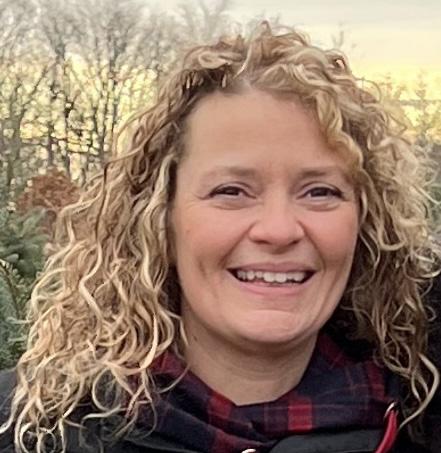

Leahy-Hilker has created a Comprehensive Community Services program at MCFI that serves more than 400 individuals living with serious mental illness, substance abuse, trauma and who may be living in poverty. She has created an ancillary network within CCS adding employment, in-home residential care, behavioral health counseling and homecare.
Implemented in collaboration with Milwaukee County Behavior Health Services, CSS is designed to provide immediate support to clients in crisis situations. Its focus is to decrease emergency room visits and decrease hospitalizations. CSS serves clients in their home and community without requiring inpatient care.

“Rachel is a skilled clinical leader and an asset to our team. Her contributions and dedication to her peers and those we serve are exceptional,” said James Welsh, director of behavioral health services at MCFI.

PARTNERING WITH PEOPLE OF ALL ABILITIES TO ADVANCE THEIR TOTAL HEALTH.
HEALTHY AND HOPEFUL COMMUNITIES
LEARN MORE AT: WWW.CFIHOPE.ORG
STEPHANIE FINDLEY FOUNDER AND MANAGING DIRECTOR

As the COVID-19 pandemic sent people and businesses into lockdown mode in 2020, Stephanie Findley, Ph.D., founded the Findley Medical Clinic in Wauwatosa. The clinic serves segments of the population who are underserved and uninsured, providing more than 6,000 COVID vaccinations and booster shots.
“Addressing the inequities of health care is the most important thing we do,” Findley said.

The Findley Medical Clinic provides a range of medical services to Milwaukee County residents, including primary care, urgent care, case management, prevention and wellness exams, chronic disease diagnosis and treatment, women’s health, wound care, flu and strep testing, laboratory services, behavioral health services, alcohol and opioid use disorder treatment, vocational training, drug testing, and sexually transmitted disease testing.
The clinic also has provided pop-up medical clinics in Milwaukee neighborhoods to serve people who otherwise would have no access to health care services and has donated bags of school supplies to hundreds of Milwaukee students when the new school year began.
With Nichole Stangel at the helm, the Critical Incident Stress Management team at Children’s Wisconsin is trained to respond to traumatic events and support providers as well as the broader community.
The CISM team provides crisis interventions and tools to help people process the physical and emotional stress of trauma and grief.
In the wake of the Waukesha Christmas Parade massacre in November 2021, the CISM team performed more than twice as many group interventions with Children’s Wisconsin staff and community groups as the year prior. Weeks later, 21 students were sent to Children’s Wisconsin for treatment after being exposed to chemicals when a piece of equipment malfunctioned in the pool at St. Augustine Prep Academy.
Stangel, who heads the CISM team as bereavement coordinator, said many on her staff worked 12-plus-hour shifts in the month of December 2021 due to a high volume of individuals, medical teams and community groups in need of support.
After the Waukesha Christmas Parade, the CISM team offered debriefing interventions within 12 and 72 hours to address the trauma right away. The team also did numerous one-on-one interventions to provide more personalized support. All told, 250 Waukesha School District staff and community members participated in CISM group interventions.
KELLY PIACSEK VICE PRESIDENT OF RESEARCH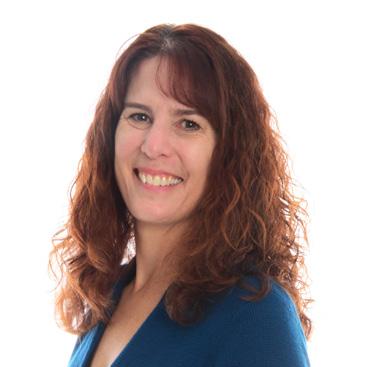
Under the leadership of Kelly Piacsek, Ph.D., vice president of research, Rogers Behavioral Health is transforming the treatment and un derstanding of mental health, according to Dr. Brad Riemann, president of philanthropy, research and clinical care at Rogers.
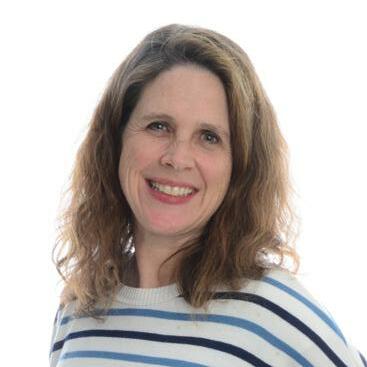
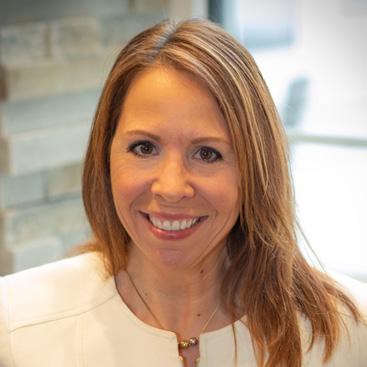
“Because of Dr. Piacsek’s experience and passion for innovation, Rogers has been able to expand research to include groundbreak ing, prospective studies aimed at accelerating its learning and delivering measurable improvements to mental health treatment practices,” Riemann said.
Piacsek is responsible for establishing the Rogers Research Center, which currently has 60 active studies, many of which involve na tional academic and clinical partners such as University of Califor nia-San Francisco, Harvard University and Baylor University.
The Research Center published 33 studies in 2022, on topics includ ing the examination of symptoms of OCD and sleep disturbances, co-occurring OCD and PTSD, and telehealth.
“Rogers’ focus on evidence-based treatment protocols and quanti tative patient-reported outcomes puts us in a unique position to do the kind of research that behavioral health has been lacking for a long time,” Piacsek said.
DIRECTOR OF MENTAL AND BEHAVIORAL HEALTH CHILDREN’S WISCONSIN
When a vehicle was driven into the Waukesha Christmas parade, killing 6 people and injruing 62, on Nov. 21, 2021, Mandy Quesnell, director of mental and behavioral health at Children’s Wisconsin in Wauwatosa, started putting together a team to staff a mental health crisis hotline that community members could call for support.
In less than a day, she had the staffing and infrastructure in place to begin taking calls. Licensed therapists and social workers were ready to offer advice to parents and refer people to additional resources if necessary.
The hotline was staffed from 8 a.m. to 5 p.m. for 10 days. If a call came in after those hours, it was automatically forwarded to the state support line, which was open 24/7. In those 10 days, nearly 100 people called in to get support and 17 people were referred to ongoing therapy.
“Mandy knew it was critical that parents could talk to their kids about the horrific violence in a way that would not further traumatize them,” said Dr. Smriti Khare, chief mental and behavioral health officer at Children’s Wisconsin.
JOSIE VEAL PUBLIC HEALTH OFFICER MILWAUKEE AREA TECHNICAL COLLEGEAs Milwaukee Area Technical College’s public health officer, Josie Veal navigated the college through the COVID-19 pandemic, supervising on-campus vaccine clinics, case tracking, contact investigation, mask requirements and hundreds of informational sessions.
“Dr. Veal has done a remarkable job during one of the most difficult times the college has experienced; showing compassion, patience and resilience,” said Vicki Martin, Ph.D., president of MATC.
Veal has spent her career caring for vulnerable and marginalized patients as a nurse. She has also impacted Milwaukee’s future nurses as an instructor and by supporting students, especially students of color, interested in pursuing health science careers as an advisor and mentor.

She earned a bachelor’s degree in nursing from Carroll-Columbia College, a master’s in nursing as a family nurse practitioner from Concordia University Wisconsin, and a doctorate in nursing from Marquette University.
Veal has also worked as a drug and alcohol counselor and a sexual assault examiner, and she has cared for clients incarcerated in several correctional facilities.
The Children’s Wisconsin Nourishing Partners Program was conceived in 2016, after some Children’s Wisconsin providers did a study of the families coming to the emergency department.
The study found that about half of all the kids were facing food insecurities. Dr. Michael Levas, a specialist in pediatric emergency medicine; Maddie Winn, physician assistant; and Jacqueline Whelan and Megan Shelbe sprang into action.

Now, when a family comes into the Children’s Wisconsin ED, parents are asked about their access to healthy food. If the answers suggest food insecurity, a notation is added to the child’s health record and triggers an alert to the medical team. The family is given a $15 meal card for the Children’s Wisconsin cafeteria or cafes. They’re also given information about food resources in Milwaukee County.
Within a couple of days, families are contacted by an information and referral specialist at the Children’s Wisconsin Family Resource Center.
To date, the Family Resource Center, led by Sarah Goldman, has received more than 4,000 referrals from the Children’s Wisconsin ED. Of those referrals, 936 families requested additional support from referral specialists and 75% reported positive outcomes, including being connected to at least one resource.
Congratulations to all of the Notable Heroes at Children’s Wisconsin!
Nourishing Partners Program
Sarah Goldman, MSW, APSW
Michael Levas, MD
Megan Sheble
Jacqueline Whelan, MN, RN, CNL
Madeline Winn, PA
Waukesha Christmas Parade Crisis Hotline
Mandy Quesnell
Critical Incident Stress Management Team
Nicole Stangel
At Children’s Wisconsin, we are so much more than our medical expertise. From providing food to families in need or responding to tragedies, these Notable Heroes reflect that our care for kids goes beyond clinical walls. Their passion drives the community forward.
Congratulations to all of the Notable Heroes in Health Care! Thank you for making a positive impact in our community.

Chorus Community Health Plans is a Children’s Wisconsin affiliated HMO (health maintenance organization) that insures more than 170,000 Wisconsin residents, including 155,000 adults and children in the BadgerCare (Medicaid) program.
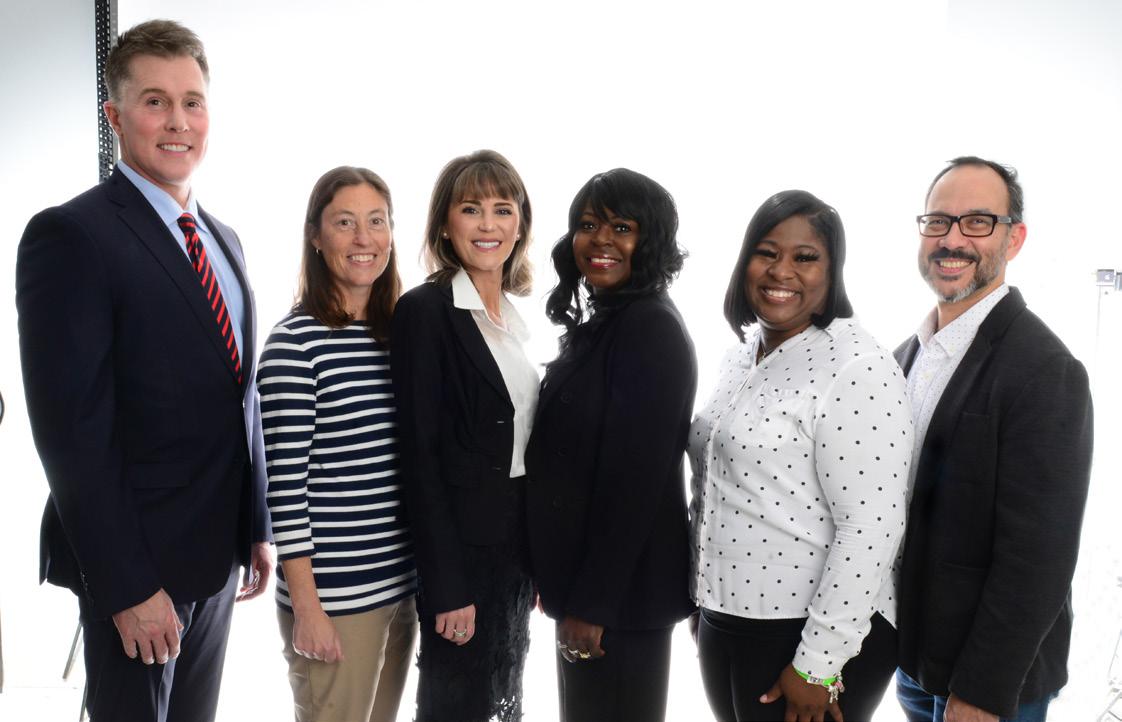

When COVID-19 vaccination rates among CCHP members were near zero, CCHP set a goal to reach and vaccinate 40% of its members by the end of 2021.
CCHP partnered with Health Connections Inc., a community-based health care provider to hold 55 COVID-19 vaccination clinics in 2021. A total of 2,200 vaccines were administered. CCHP surpassed its goal with 42.5% of CCHP adult Medicaid members receiving the full vaccine series. An additional 5% received one dose, making overall vaccination status among CCHP’s Medicaid members 47.5%.
In 2022, as new members have joined CCHP and vaccines have been approved for the youngest populations, CCHP and HCI have continued the mobile vaccine clinics in areas with the highest vaccine disparities.
To date, they have hosted more than 80 clinics and more than 2,235 children and adults have recieved the COVID-19 vaccination.
Dr. Hasnain Bawaadam, medical director of the pulmonology division, respiratory services and critical care at Aurora Medical Center in Kenosha, cares for critically ill patients in the intensive care unit, while also working in the pulmonary intervention unit, where he specializes in advanced robotic bronchoscopy.

“Dr. Bawaadam is an innovator, passionate about finding new best practices in the pulmonary specialty. He recently developed a method to help surgeons find the smallest nodules by marking them with a fiducial coil prepped with green dye placed at the time of biopsy,” said Annette Guye-Kordus, coordinator of public affairs for south Wisconsin at Advocate Health.
He is sharing this procedure with colleagues through professional conferences and published papers.
Bawaadam completed fellowships in pulmonary medicine at Chicago Medical School at Rosalind Franklin University, where he currently serves as associate professor of medicine. He completed fellowships in interventional pulmonology at the University of California San Francisco and in Critical Care Medicine at St. Louis University School of Medicine.
We believe health insurance has the power to change lives. This belief drives our passion for expanding access to health care, advancing health equity and building stronger communities. Because of that, we partnered to provide 55 mobile clinics and administered thousands of vaccines where individuals and families needed it most.
Congratulations to all of the Notable Heroes who make our community better — we are honored to be a part of that list.
Learn more at chorushealthplans.org.
health plan committed to doing more.CCHP COVID-19 Vaccine Workgroup Dr. Kelly Hodges Associate Chief Medical Officer Suzette Patrick Project Manager Denise McDowell Community Member and Engagement Manager Caitlin Vicini Senior Community Relations Consultant
Located on the north side of Milwaukee, Ascension All Saints - Family Health Center cares for many of the most vulnerable populations in Milwaukee.
Analysis of patients’ social determinants of health has shown that they are at risk for poor health outcomes, according to Sandra Olsen, program administrator at Ascension Healthcare/Medical College of Wisconsin.
“Nevertheless, we have demonstrated that with concentrated effort and innovative approaches, it is possible to achieve outcomes comparable and often exceeding those of suburban practices,” Olsen said. “Our approach begins with asking the community what it needs. Focus groups with patients, community members and leaders help to direct our efforts. As a result of their recommendations, we have established programs that go beyond the normal activities of a physician practice.”
One of the most critical needs identified is lack of healthy food. The center has addressed this in a variety of ways. In conjunction with a local church, for instance, the center has turned an acre of land on-site into a farm that grows produce, which is donated to patients and sold at reduced cost in the community.
DR. ERIC WEISS CARDIOTHORACIC SURGEON AURORA ST. LUKE’S MEDICAL CENTER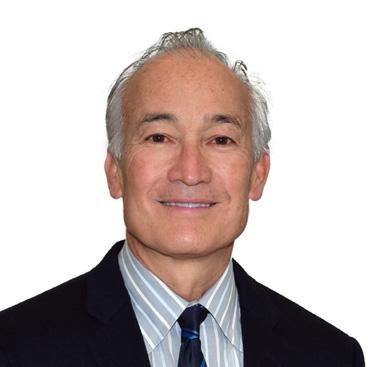

Colleagues say that Dr. Eric Weiss, a cardiothoracic surgeon at Aurora St. Luke’s Medical Center in Milwaukee, often tells the story of the first time he saw a beating heart during a procedure.
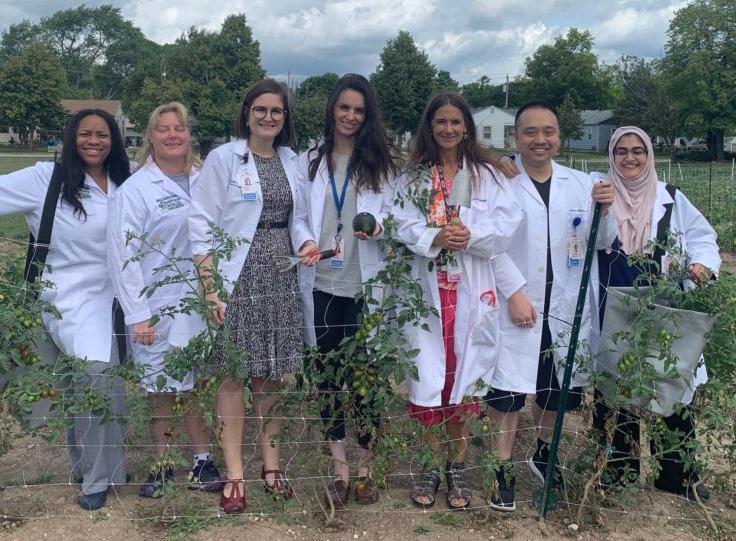
“From that moment on, he says he knew he could never do anything else but heart surgery,” said Matt Queen, public affairs coordinator for Advocate Health. “His day-to-day work is inspired by his fascination with how the heart functions and the heart’s ability to keep on pumping for a person’s entire life.”
“Whether it’s fitting a patient in for open heart surgery within 48 hours or helping a patient get back to life and family more quickly, his expertise has had a serious impact on the lives of his patients,” Queen said. “Dr. Weiss has pioneered many cutting-edge, minimally invasive surgical techniques. He often talks about minimally invasive operations as a way to make sure that patients have the best possible outcome. Countless patients have expressed their gratitude for him and how his work has improved — and, in many cases — saved their lives.”
DR. JOHN CROUCH DIRECTOROF THE CARDIAC SURGERY SERVICE LINE; SURGICAL DIRECTOR OF CARDIAC TRANSPLANTATION AND MECHANICAL CIRCULATORY SUPPORT
In his 34-year career at Aurora St. Luke’s Medical Center in Milwaukee, Dr. John Crouch has performed more than 300 heart transplants.
As the director of the cardiac surgery service line and surgical director of cardiac transplantation and mechanical circulatory support, Crouch has seen everything one could imagine with the cardiovascular system, according to Matt Queen, public affairs coordinator at Advocate Health.
Crouch calls to check in on his patients every weekend, holiday and vacation, said nurse practitioner Jackie Budynek.
“He comes to the hospital at all hours of the day and night if there is an unstable patient. He comes in on his ‘off’ weekends to round if there are patients he’s worried about,” Budynek said. “Most recently, he sat at the bedside on and off all night watching a critically ill patient.”
“Dr. Crouch is a cardiac surgeon because it’s what he loves and what every patient deserves — someone in their corner fighting for them,” Queen said.
The recreation therapy team at Clement Manor in Greenfield provides a range of activities and therapies to all residents at its senior living campus, from independent and assisted living, to memory care and skilled nursing.

“Evidence-based outcomes are critical to the viability of these therapies and specific health outcomes. Our recreation therapy programs focuses on well-being through movement, community inclusion, leisure, education and creative and ex pressive arts,” said Natalie Strade, direc tor of marketing at Clement Manor.
The facility has two full-time music therapists on staff, while many senior living communities have none. Since the COVID-19 pandemic, the recreation therapy team has worked to get life back to normal for Clement Manor residents. Their activities calendars are filled with plays, musicals, outings and scenic bus rides.
The team also provides an in-house lifelong learning program, inviting all seniors in the community to take classes.
“Senior living communities are still dealing with COVID-19 outbreaks. Our team is adapting on a daily basis to provide ongoing activities, while staying safe. They give each individual the attention they need to stay included and cared for,” Strade said.

Rita Hanson, medical director for clinical integration at Net work Health, is responsible for improving gaps in care for members and improving risk adjustment scores, facilitating collaboration between Network Health and provider sys tem leaders.
When Hanson originally came to Network Heath almost six years ago, the organization wanted to improve its relationships. Since then, Hanson has been working with her team to change that by building an infrastructure and processes to support patient care, including creating timely reports featuring in-depth data from elec tronic health records, measuring progress and conducting provider satisfaction surveys.
In 2021, Network Health earned a five-star rating from the Centers for Medicare & Medicaid Services for the first time. Less than 5% of all plans in the country are rated at that level.
Network Health also increased the number of Medicare members at tributed to providers for its primary care from 60% (2019) to 77.5% (2022).
Care model achievements include de-duplication of transition of care outreach, initiation of interdisciplinary care conferences, and collaboration to improve documentation of advanced care plans.
As director of business op erations, laundry, asset and fleet management at Ascension Wisconsin, George Alex watched laundry operations grow from a manual process servicing two hospitals – St. Joseph and St. Michael – to operating a modern facility serving all of Ascension Wisconsin.
Alex joined the laundry team in 1972 during his senior year in high school. He worked part time, primarily weekends and summer months, on the laundry line and continued to work in a variety of roles while attending college at the University of Wisconsin-Milwau kee. He completed his degree in sociology and joined the laundry services division after graduation.
Sanitized laundry is a component of infection prevention in hos pitals. Alex oversees the cleaning of 11 million pounds of laundry a year. His entire staff of 85 has been hired through Goodwill’s Tal entBridge program.
“George is an innovative leader,” said Vanessa Freitag, vice presi dent of pharmacy at Ascension Wisconsin. “Early in the pandemic when there was a global shortage of disposable isolation gowns, he brought out some retired washable gowns and, after making some alterations, was able to put them to use.”
DR. CHARLES KOSOWSKIDr. Charles Kosowski, a dentist with the Ascension Wisconsin Seton Dental Programs, focuses on providing access to urgent care dental services for children and adults who would otherwise be challenged accessing dental care.
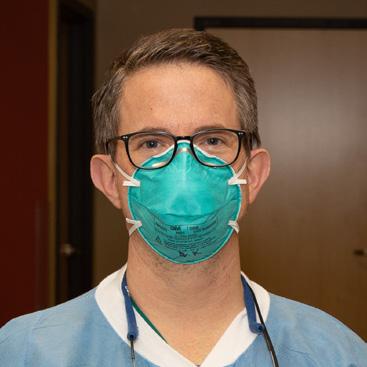
For the past 12 years, he has provided oral examinations, X-rays, cavity treatment, extractions and oral health education. Koswoski assisted in providing more than 2,800 urgent dental encounters to children and adults at schools across southeastern Wisconsin at multiple homeless shelters, community clinics and additional loca tions across Milwaukee County.

Through Kosowski and Ascension Smart Smiles, more than 12,000 students each year at 107 schools in Milwaukee are provided dental care. The Centers for Disease Control and Prevention reports tooth decay as one of the most common chronic diseases of childhood. When left untreated, tooth decay can have consequences, including problems with eating, speaking and learning.
Closer to home, Milwaukee County falls behind other Wisconsin counties for adults without health insurance, with 29% reporting no recent dental visits, according to the 2021 Milwaukee County Community Health Needs Assessment.

Dr. Karen Watson, an OB-GYN at Ascension Wisconsin, cares for some of Milwaukee’s most vul nerable residents, and she does it at the same hospital where she was born.
“(Watson) leads Ascension St. Joseph’s efforts for continuous improvement regarding maternal and infant health and has imple mented innovative models for hospital-based care for obstetric pa tients,” said Matt Lee, medical director, women and families service line, at Ascension Wisconsin.
“Dr. Watson is a caring, compassionate physician and a servant leader dedicated to the advancement of health equity in Milwau kee. She believes improving health equity begins by listening and understanding the needs of the populations she serves, especially those who are poor and vulnerable. She is an incredible role model and a testament to Ascension Wisconsin’s commitment to providing equitable care.”
Ascension St. Joseph is located in a predominantly low-income neighborhood in Milwaukee, and four of the five top zip codes that use its services are within the top 11 highest-need zip codes in Mil waukee County. In high-need zip codes, residents experience great er burdens related to preventable health issues, Lee said.

Brenda Buchanan, a commu nity health nurse at Ascension Wisconsin, promotes education around chronic disease manage ment, food security, infant mortality prevention and health navigation.
Serving Meta House of Milwaukee, Buchanan works with women experiencing substance abuse problems and co-occurring health problems. Additionally, she leads Ascension Wisconsin Blanket of Love, a health education and support group for women at Meta House with prenatal and parenting education for expectant mothers and their families. Participants receive education on prenatal care, labor, delivery and other strategies to improve the health of mother and baby.
Buchanan also serves as the parish nurse for Three Holy Women in Milwaukee, a collaboration of parishes in the East Side, Riverwest and downtown Milwaukee neighborhoods that began in 2010. Under her guidance, the collaboration’s Hospitality Center was created for individuals who are dealing with poverty and homelessness. Each week, guests can receive a hot meal, food staples, clothing and ac cess to a safe place to gather.
DR. DANDAN WANG SENIOR GRADUATE STUDENTDr. Dandan Wang is a clinician by training, having obtained her medical degree from a leading medical school in China, and is currently working on her doctoral thesis. Her research fo cuses on improving the genetically engineered CAR-T immune cellbased therapies to blood and pancreatic cancer patients.
Working alongside clinicians at Froedtert Hospital, Wang has dis covered the molecular reasons for this failure. Her findings have identified biomarkers that will help to diagnose the patients who are going to fail the therapy.
She is also performing research to identify ways to combine immune cell therapies with radiation therapy. Her work has revealed a partic ular radiation therapy on pancreatic cancer patients that improves their ability to respond to CAR-T cell therapies.
Froedtert Hospital is the only clinical facility that offers genetical ly modified cell-based immunotherapies to cancer patients within southeastern Wisconsin.
Wang recently has been selected as one of the seven awardees na tionally by the American Society of Hematology to receive its twoyear predoctoral fellowship.

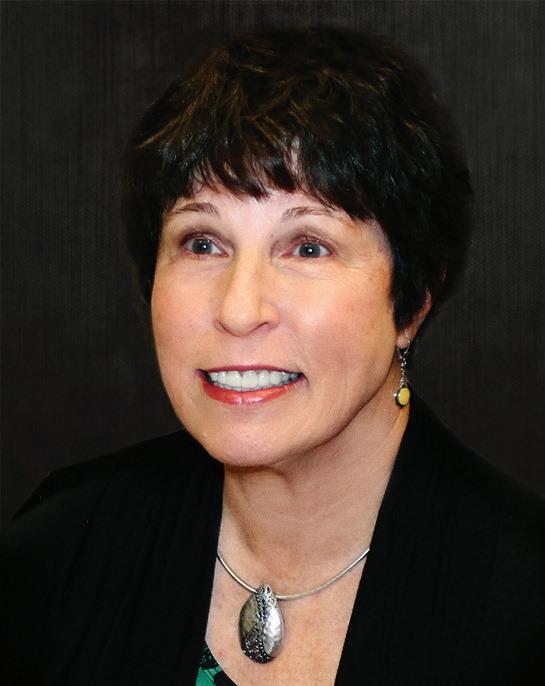
Dr. Bhupendra Khatri, medical di rector of the Center for Neurological Disorders in Milwaukee, is an interna tionally known neurologist who specializes in treating patients with multiple sclerosis.
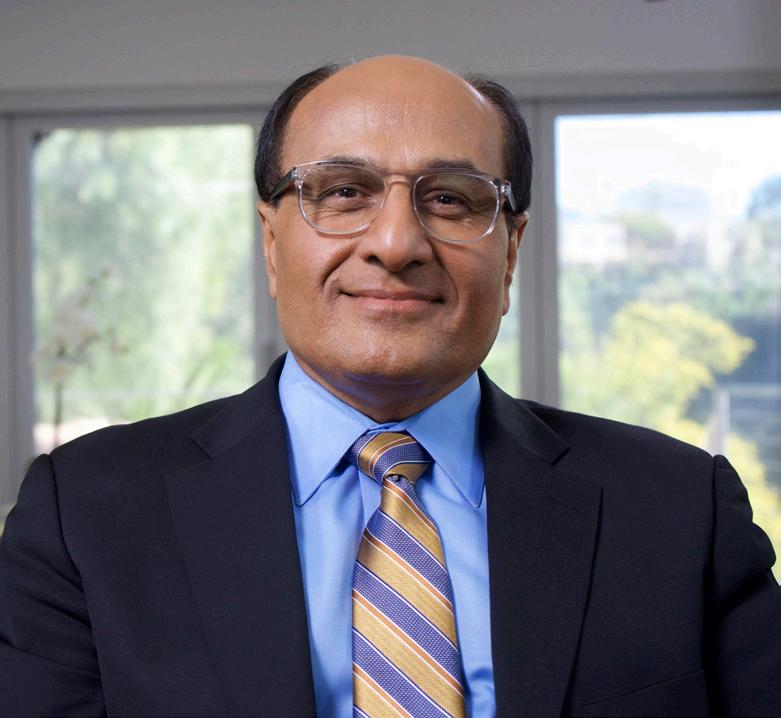

He is on the cutting edge of treatments for MS, and has pioneered many innovative treatment modalities, such as plasmapheresis and infusion therapies, according to Karl Rajani, president of Horizon Healthcare Inc.

“Dr. Khatri’s individual patient-centered approach focuses on treat ing the whole person - mind, body and soul,” said Rajani. “He is also an internationally known author, having published two books that deal with health care practitioner burnout, the unacceptably high cost of health care, solutions for fixing the nation’s ailing health care delivery and financing system, and the impact of positive think ing on recovery. Dr. Khatri is a truly compassionate physician who takes a personal interest in the health and recovery of his patients. He believes that health care is a right of all Americans.”
In 2015, Khatri was honored with the National Multiple Sclerosis So ciety America Lifetime Achievement Award.


Led by Donetta Walker and Tai Hooper, Divine Wellness & Counseling, located in Glendale, works to provide for the mental health needs of children, families and adults throughout the Milwaukee area.


Walker is owner and chief executive officer, and Hooper is director of clinical services.

Since its inception, Divine Wellness & Counseling has expanded its efforts to serve communities of color in Milwaukee with the mental health and counseling services they need.
“As a Black woman-owned and -led organization, it brings a unique perspective on mental health to a community that has traditionally been underserved in this area and often times hesitant to seek out services,” said Hooper’s spouse and associate, Joe’Mar Hooper, executive director of Tucson, Arizona-based 3rd Decade and former executive director of Milwaukee-based Safe & Sound Inc.
“They handle a steady stream of new and returning clients that has significantly grown during the pandemic, a time when mental health has been a major issue for the community due to the hardships caused during COVID-19,” said Hooper. “Divine Wellness has grown its staff to meet the demand and expanding services to local high schools to ensure young people are met where they are at and receive the mental health counseling and treatment they need.”

In 2015, childless adults were able to get Medicaid and, for the first time, many low-income adults in Waukesha County had dental ben efits. However, few dental providers were accepting new patients because of the extremely low reimbursement rates.
Lake Area Free Clinic in Oconomowoc decided to add an adult Dental Clinic to serve low-income Medicaid and uninsured adults. Kathleen Schwade was a psychologist at LAFC and heard about the idea. She suggested that her husband, Dr. Robert Schwade, a dentist nearing retirement, may be able to help.
Schwade, who had a private practice for more than 40 years and served on the faculty of Marquette University School of Dentistry for seven years, offered to be the LAFC volunteer dental director. He worked on the dental task force, studying models, visiting sites and determining what type of operation would be sustainable.

In 2017, LAFC opened a six-chair dental clinic at its facility at 856 Armour Road. In 2019, with a 300-person wait list, LAFC opened a seventh chair.
As volunteer dental director, Schwade oversees clinic operations, serves on the board of directors and is the liaison between the LAFC’s medical and dental clinics. In his time with LAFC, Schwade has provided more than 2,600 hours of volunteer service.
Since 2017, LAFC has had more than 20,000 dental patient visits.
Receiving radiation treatments can be frightening for the chil dren who need them. Courtney Shanmugabaskaran, a radiation therapist at Froedtert Hospital since 2013, tries to make the experience less stressful by designing and painting immobilization masks for her patients.
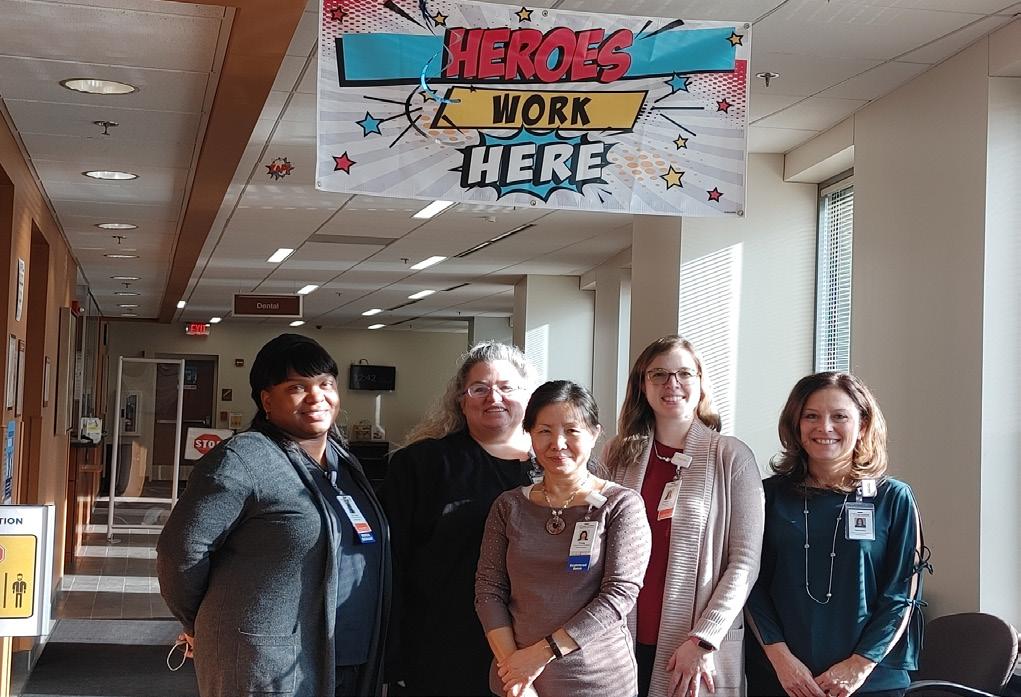
Since 2019, using paint and markers, Shanmugabaskaran has been creating mesh masks that look like superheroes, princesses, ani mals and more. She has even made one with a “poop emoji” theme. “Courtney has stayed up extra late and used her own money to make sure these kids have this custom mask for their radiation. She goes the extra mile to do what these children need to make a scary experience much better,” said friend Edward DeShazer, executive director at the Greater Holy Temple Christian Academy.
The masks are not the first time Shanmugabaskaran has used her creative skills to benefit children. In 2013, she participated in the MACC Fund’s Handmade for Hope effort, raising $2,000 in donations by crocheting hats and scarves.
The diabetes clinical care management team at Progressive Community Health Centers, which has three locations in Milwaukee, works together to ensure patients have the tools needed to self-manage their diabetes. The team uses phone calls, individual and group visits and motivational interviewing to understand potential barriers for patients and create links to care, such as transpor tation, affordable medications, access to food and screening for behavioral health concerns.
As a result, in 2021 Progressive eliminated racial and ethnic disparities in diabetes control (as defined by the Uniform Data System). At the end of the year, 23% of the 1,100 African American patients with diabetes were uncontrolled or without a test compared with 22% of white patients.
The team consists of Francesca Napolitano and Sarah Ray, clinical pharmacists; Pang Vang, registered nurse care coordinator; Marshae Love, medical assistant; Madeline Tully, family physician; Josh Spierer, behavioral health consultant; Jay Schubring, data analyst; Tracy Blohm, medical records; Ellen Ketter, physician assistant; Suzanne Gosenheimer, director of quality management; and Allison Kos, chief medical officer.
ASSOCIATE PROFESSOR FROEDTERT & MEDICAL COLLEGE OF WISCONSIN
Dr. Ahmed Obeidat, associate professor in the department of neurology at Froedtert & Medical College of Wisconsin, is a leader in diagnosing, treating and managing multiple sclerosis and immune disorders of the central nervous system. He is recognized for his work nationally and internationally, according to Rob Multerer, president of the National Multiple Sclerosis Society.
“Dr. Obeidat is an advocate for medical humanities and believes in the power of patient stories in shaping a successful, long-lasting patient-doctor relationship,” Multerer said. “Dr. Obeidat sees dozens of people living with MS each week, while also conducting his own research to help understand the high prevalence rate of MS in Wisconsin as well as southeastern Wisconsin.”
Obeidat’s research also focuses on advancing the understanding of MS causes and to improve the efficacy and safety of current therapeutics.
He has been awarded the Clinical Care fellowship by the National Multiple Sclerosis Society while currently serving as a member of the NMSS - Wisconsin Chapter Board of Trustees.
 SYLVIA AMEEN EXECUTIVE DIRECTOR FROEDTERT HOSPITAL FOUNDATION
SYLVIA AMEEN EXECUTIVE DIRECTOR FROEDTERT HOSPITAL FOUNDATION
Since joining the Froedtert Hospital Foundation as its first executive director in December 2020, Sylvia Ameen has been a powerful force, guiding institutional leaders to enhance the patient experience, strengthening its donorcentered philanthropic strategy and positioning the hospital for lasting success, colleagues say.
“Sylvia is a captivating, transparent, and driven leader who engages everyone in our shared vision to connect diverse communities to the best of academic medicine,” said Eric Conley, president of Froedtert Hospital.

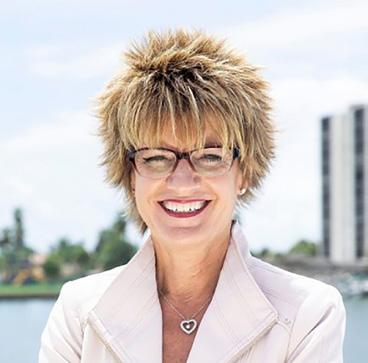
Ameen joined Froedtert Hospital with more than 30 years of experience in communications, marketing and fundraising. As the strategic lead and liaison for the foundation board, she reestablished the purpose and scope of the board, redefined the bylaws, established expectations for members and added three new members.
In February 2022, Ameen secured the single largest gift to Froedtert Hospital: a $30 million investment from an anonymous donor. The funds will be used to strengthen the hospital’s workforce, advance clinical trials and harness new technologies.
WHEN TARGETING potential independent directors for boards, it’s important to keep balance in mind.
You might think I’m talking about having a balance of skills and expertise. The most effective executives have created a unique balance in their lives.
High-performing boards are experienced, nim ble, engaged, strategic and relevant. Multifunction al experience is necessary in the boardroom. So is balance for each board member.
How do top-performing senior executives allo cate their time? Is it all about business decisions and strategy? No. Superior leaders build in time for the unexpected business challenges as well as intellec tual growth, family, fun, fitness, faith, networking and volunteer work.
When assessing your board or evaluating your next director for your independent board, don’t be afraid to ask how they allocate their time and en ergy.
Why should a company think balance is im portant? Simply, to guard against burnout and lower business risk with board members who are healthy and focused with a positive mindset. In tentionality and consistency in living a balanced life are key differentiators of “good” versus “great” executives.
The best directors have developed and nur tured a group of trusted colleagues to provide dis
creet and unfiltered advice. Top performers attract similar performers. The broader the network, the more comprehensive the information and experi ence sharing.
The best board members consciously set aside time to increase and strengthen their networks, bringing transformative thinking and resources to support the CEO, strategy and overall success of an enterprise.

An executive who manages time well creates greater opportunity to develop and grow these relationships. The breadth and depth of a network correlates closely to personal net worth.
Independent board members, by the way, are unaffiliated with the company. They have no po litical agenda. They are not a personal friend of the owner or director and have no business relation ship or family connection.
Sometimes the strength of your network equates to how many people each of your connec tions has helped along the way. When evaluating the personal characteristics and values of a pro spective board member, it’s critical to identify their leadership style. The days of authoritarian leader ship and autocratic business environment are gone.
A new era is upon us. The best leaders are those who understand servant leadership by carving out time to teach and mentor others. Great networks are built by serving others. Executives who are suc cessful mentors and servant leaders have a great track record of performance in the boardroom.
If you want to be a member of a board, enhance your “boardroom brand” through a well-balanced life. Be disciplined in making time for personal rela tionships, health and wellness. Develop others and build a network of trusted colleagues and experts. Associate with the best. Give the most you can to those willing to grow, and honor your time and balance.
A board carries significant responsibility and accountability to the company’s stakeholders and shareholders. When qualifying prospective board members, don’t be afraid to probe deeper on bal ance, character, personal traits and philosophies. Of course, the executive’s business expertise is crit ical in filling a specific need in the boardroom. But these additional qualities will only enhance your board.
Recruiting well-balanced, well-connected, ser vant leaders will have a powerful impact, increase the productivity of your board and improve your overall business performance. n
Rand McNally is a Vistage chair, retired CEO, consultant to private companies and principal of Wauwatosa-based HurdMcNally, a board of directors search firm for privately owned companies in the Upper Midwest.
He can be reached at Rand.McNally@ HurdMcNally.com.

Do your board members have balance?
THE MESSAGE IS OUT: Employee salary budgets are increasing.
However, don’t get too excited. Wages were up 5.1% in November, year-over-year, according to the U.S. Labor Department. That’s up significantly from the 3.0% increases in salary budgets we have seen over the past decade but nowhere near cur rent inflation rates. The consumer price index rose 7.7% in October, year-over-year.
Salary budgets are not intended to keep up with inflation, rather to align with what companies are able, or willing, to spend. The balance between wages and inflation is causing most business to as sess where their dollars will have the most impact on the success of the company. Differentiation of pay is what is needed.
As business returns to pre-pandemic levels, the need to have a solid return on investment is criti cal to manage company costs. To obtain essential profitability, a review of where your employees are paid compared to market rates of pay is essential.
Additionally, this assessment must include an honest performance and productivity measure. Are some of your employees “quiet quitting”? This term has been used a lot lately. It can have a signif icant effect on your business. Quiet quitting is re ally a way of saying that some employees are just coasting along and not as engaged as you would like them to be. How does an organization stir that engagement to make a real difference in the pro ductivity of individuals and teams? The answer falls on management to establish clear goals and expectations for performance.
When determining 2023 base salary increas es, I encourage management of each company to assess how well each person is paid in relation to competitors and how their performance meets expectations. You normally can get a pretty good gage on what the market is paying for certain jobs if you try to recruit. Otherwise, you may need to purchase salary data from a published source or through an agency for an unbiased review of com petitive wages. The competitive wage assessment is just the first step to determine what is an appropri ate increase for the individuals on your teams.
Next, taking a hard look at the work outcomes and performance of each person is the only way to determine if your expectations are being met. Without an assessment of the overall impact the employee has to the bottom line, your company is losing out on critical funds that could be allocated to other key employees. The methodology to deter mine the amount of base salary increases is a com bination of where the employee is paid compared to market and their individual performance level.
Over the past two or more years, we have been dealing with employee shortages and therefore have been bending company practices to get people in the door. It is evident that the trend that allows employees more autonomy to work from home one or two days a week has clear advantages. Howev er, the employee should be made aware that they are still accountable to get their work done. I pose another option, which will allow the employee to earn additional compensation: establish a well thought-out incentive plan.
Incentive plans are variable pay, which is tied to the accomplishment of key metrics established between the employee and their manager. Most incentive plans start out with a “hit or miss” target of company profitability; this overarching metric provides the pool of dollars that can be allocated to your teams. Using this starting point, if the compa ny is not making money, no one receives incentive pay. Next, determine what metrics are measurable and are directly under the responsibility of the in dividual. Bringing the employees in on the devel opment of metrics and target levels of performance
will ensure their buy-in and acknowledgement of what needs to be done to receive extra compensa tion. Developing an incentive plan that rewards your employees for meeting key performance in dicators can be a very motivating tool, if done cor rectly.
Think about what your salary increase bud get spend should be. If you are coming up with more than 5.0% to meet market rates of pay, you may need to gradually increase salaries over time. However, a strong incentive program driven off company profitability could be the saving grace to get your employees fired up on providing the extra effort needed to get the job done. Your communica tion with staff on how each employee’s efforts help the company as a whole can go a long way to build a culture of teamwork and engagement. We all want to be part of a team and know what we do really makes a difference. n
Nicole Schmidt is a human resources consultant and the owner of Reward Strategies LLC (hrrewardstrategies.net). Previously, she was a global compensation manager for A.O. Smith. She can be reached at rewardstrategies@yahoo.net.
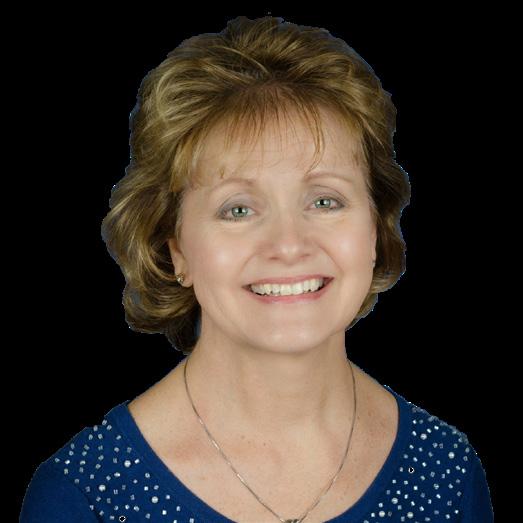

you may have. When the procedure is complete, the staff is there to support you with aftercare information and treatment if required. Included in your care instructions is a contact number if a problem occurs. Within a few days after the im plant procedure, you receive a call from your peri odontist asking how you are doing. I needed to call the emergency contact number when I was out of town, and received an immediate response, even though it was on a weekend. By Monday morn ing, I was scheduled to see my periodontist and the problem was resolved. Not only does AZPerio guar antee its work for life, it sets up additional follow-up appointments in set increments to ensure that your implant is performing at the highest level.
warm.” The completed cards are displayed in the office so other patients may read them. Many of the feedback cards are anonymous, others have the patient’s name and contact information. This constant flow of information provides AZPerio the feedback they need to continue to set them apart from the competition. n
AN ONGOING CHALLENGE that faces many business leaders is how to separate their organization from the competition in the market. Will the differentiator be their product or service or how their customers are treated?

There are numerous dental offices and individ ual practitioners who offer implant services, some even guarantee a perfect smile in one day. I had the opportunity to interact with an office in Scottsdale, Arizona, that clearly separates itself from its com petition by the excellent level of service they deliv er to their patients. AZPerio is a group of periodon tists with numerous offices that provide implant and other periodontic services. The practice doesn’t compete on price; it just provides superior service.
Its staff, including its dental assistants, office staff and technicians are all “patient focused” and practice in a culture of excellence. I am a patient who has received implant services twice from the AZPerio team of professionals. From the time you enter the office as a referral from your personal dentist, you are treated with respect and subjected to a high level of care.
Once you have the procedure scheduled, the dentist will contact you and answer any questions
So, what can we learn from AZPerio’s example? The initial interaction with your customer, office personnel or patient is critical to the professional relationship. It is very hard to overcome a negative first impression. Your receptionist, salesman or cus tomer service associate could be the first person a potential customer interacts with and forms an im pression of your organization. You certainly want that impression to be a positive one. So, what have you done or are you doing to make sure that this is the result?
The answer to this question is found in several processes including hiring and training. Are you hiring applicants who are really customer focused? Do your procedures and orientation processes sup port your customer-focused strategy? Do you re ward employees who constantly deliver superior customer service? Do you have a feedback mecha nism in place that provides your customers the op portunity to comment on your services, products or service providers?
AZPerio has a mechanism in place where pa tients can complete “Knock Your Socks Off” com ment cards. When complete, they donate a pair of socks to a local charity.
The motivation is clear: “Help us be a better provider, and we will help keep someone’s feet
Cary Silverstein, MBA, is a speaker, author and consultant, a former executive for Gimbel’s Midwest and JH Collectibles, and a former professor for DeVry University’s Keller Graduate School. He can be reached at csilve1013@aol.com.
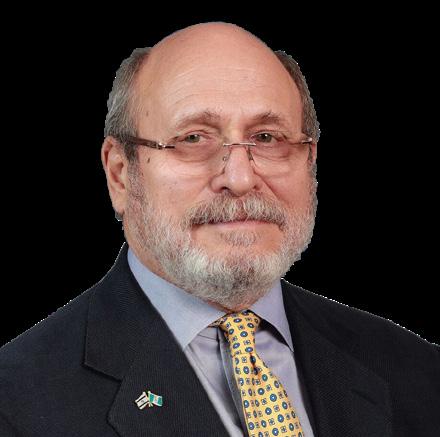
Exceptional customer service enables a business to stand out from its competition
the Harvard Business Review outlines three help ful tips:
Consider partnering with a nonprofit for a product launch
Arising number of for-profit busi nesses are looking to partner with nonprofits for advice, ranging from finding a purpose to effectively relaying strategies to stakeholders. But many of those businesses don’t know where to begin. Featuring insight from Giulia Siccardo, a partner at McKinsey & Co., a November article by
Statistics from Nonprofits Source, cited in the Harvard Business Review article, show that 90% of corporations say their reputation becomes more trustworthy after partnering with nonprofits. Therefore, corporations can benefit from the repu tation and services of nonprofits when launching a new product.
Perhaps more important is that 89% of corpo rations believe their work with reputable nonprof its help to accelerate societal impact. While not a substitute for holistic change, partnerships that go beyond PR or branding can elevate corporate envi ronmental, social and governance strategies.
Go to market with a nonprofit arm If their roles do not overlap, for-profit and non
profit firms can join forces to work “synergistically.” For example, Tomorrow.io – a weather and climate security platform – provides insight to industries such as irrigation and field management. Mean while, its nonprofit arm TomorrowNow.org uses the same advanced technology to serve underrep resented communities by providing advanced no tice of extreme weather events as well as education and engagement.
The for-profit, nonprofit loop leads to “shared purpose, catalytic solutions, and accelerated im pact,” Siccardo said.
Together, through a nonprofit-like vehicle, companies can spread information, set industry standards and even send market signals. For example, Frontier, a public benefit corporation scaling a carbon removal market, was built in 2022 by Alphabet, Meta, Shopify, Stripe and McKinsey. n
The hardest climb is not Denali, K2 or Everest. The hardest climb is the mental climb, the internal struggle. It lies deep within you as a CEO or business owner. And to break new ground, you have to show up big every day — especially when the headwinds are strong and uncertainty lies around every bend.







Living a Life of Climb demands your best. It requires resourcefulness and the courage to make tough decisions. It calls for a relentless drive to push forward past every challenge and obstacle. It means you lift as you rise to elevate everyone around you along the way.
Peak Performers Don’t Climb Alone.
As the world’s largest CEO peer advisory and executive coaching organization, Vistage has helped guide high achievers along their leadership journey for 65 years — brave leaders running small and midsize businesses against all odds. They climb with a trusted team of peers and an accomplished guide who knows the lay of the land. It’s a proven approach that’s helped 100,000+ business leaders around the world plant ags on their greatest dreams and ambitions.
If you’re ready to reach new summits in business and in life, the path starts here.
JOIN THE CLIMB Learn more at Vistage.com/iClimb












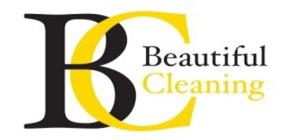

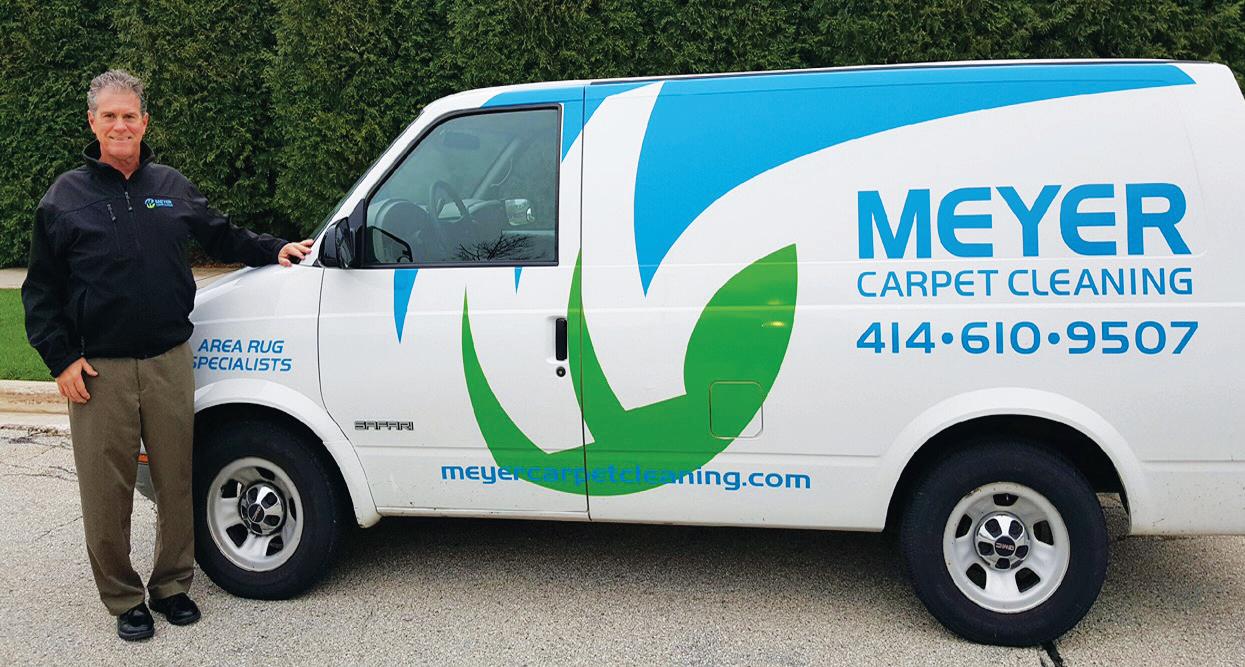
velenis aut et dolupti issedis dolorrovid et laborem. Itatur aut as sae des andi dolupta dolor alist rehento reperum, volut rest, sum, ut lit quis ex et ommoluptate nectatio. Alignimust remque voluptat officitas rectam dolorae. Nequisquae omnis doluptatae nistium et quid et venis maximus aut moluptiam eum reperum quasimint, Nequisquae omnis doluptatae nistium et quid et venis maximus aut moluptiam eum reperum quasimint, Idento Idento officimus et, sundit omnietur? Quiat.
Alignimustremquevoluptatofficitasrectamdolorae.Nequisquae omnis doluptatae nistium et quid et venis maximus aut moluptiam eum reperum quasimint, Idento Idento officimus et, sundit omnietur?
theirdiscountsarethebest.Doyourduediligence,focusingontheend-



















KeepWisconsinmoneyinWisconsin.Whileitmaybeeasytopurchase innationalsolutionclaimingtofixallofyourcompany’shealthcareissues






This undated photo shows the Pabst Theater with Milwaukee’s City Hall in the background. Built in 1895, the theater was owned by interests related to the Pabst family until 1953, when it was sold to a foundation formed by the Lynde Bradley, Allis-Chalmers and Froedtert foundations. By 1961, the venue was sold to the city and later closed in 1969. After undergoing a $2.5 million renovation project, the Pabst reopened in the mid ‘70s and was connected to the Milwaukee Center development in 1989. Philanthropist Michael Cudahy bought the theater from the city in 2002 for $1. Today, the 1,300-seat venue is operated by The Pabst Theater Group.

— Photo courtesy, Milwaukee Journal Sentinel
IT WASN’T SURPRISING when Madison-based American Family Insurance announced plans to sell the former Mandel printing building near downtown Milwaukee, which it bought in late 2019 with intentions to establish an office there with 400 employees.
That was exciting news at the time for Mil waukee.
But then in 2020, the COVID-19 pandemic hit, forcing many businesses to operate with em ployees working at home. American Family put its plans to renovate the building on hold as it said it needed to evaluate its future office space needs. Those plans never moved forward.
Some employees at many businesses en joyed working remote during the pandemic and have been eager to maintain that arrangement. Many employers are still trying to figure out how to provide flexibility for those employees while also fostering a collaborative and creative workplace culture.
Some companies are investing in new office
spaces to help attract employees to come in and work in person. Fiserv recently announced plans to move its corporate headquarters from Brookfield to downtown Milwaukee. The company plans to eventually have 780 jobs in the office, which will be located in the building formerly occupied by a Boston Store and the corporate office of its parent company, before it went out of business in 2018.
Brookfield-based Milwaukee Tool earlier this year opened an office in downtown Milwaukee, in the former Assurant Health building. The company could eventually have 2,000 employ ees there. Assurant exited the health insurance market in 2016 and vacated its downtown Milwaukee building.
But other companies are taking a different approach.
In October, Harley-Davidson CEO Jochen Zeitz told Bloomberg that the company is plan ning to repurpose its corporate headquarters in Milwaukee as the company moves to embrace remote work. Just four years ago, the company had more than 1,000 employees there.
Each company has to do what’s best for its in terests and for its employees. But these decisions impact local communities and their economies. Companies that have employees living and work
VOLUME 28, NUMBER 15 | DEC 12, 2022
126 N. Jefferson St., Suite 403, Milwaukee, WI 53202-6120
PHONE: 414-277-8181 FAX: 414-277-8191
WEBSITE: www.biztimes.com
CIRCULATION: 414-336-7100 | circulation@biztimes.com
ADVERTISING: 414-336-7112 | advertising@biztimes.com
EDITORIAL: 414-336-7120 | andrew.weiland@biztimes.com
REPRINTS: 414-336-7100 | reprints@biztimes.com
PUBLISHER / OWNER Dan Meyer dan.meyer@biztimes.com
DIRECTOR OF OPERATIONS Mary Ernst mary.ernst@biztimes.com
COMMUNITY ENGAGEMENT / OWNER Kate Meyer kate.meyer@biztimes.com
EDITORIAL
EDITOR Andrew Weiland andrew.weiland@biztimes.com
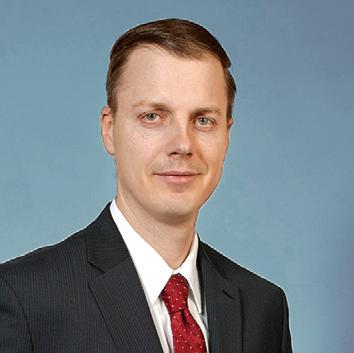
MANAGING EDITOR Arthur Thomas arthur.thomas@biztimes.com
ASSOCIATE EDITOR Maredithe Meyer maredithe.meyer@biztimes.com
REPORTER Ashley Smart ashley.smart@biztimes.com
REPORTER Cara Spoto cara.spoto@biztimes.com
REPORTER Lelah Byron lelah.byron@biztimes.com
SALES & MARKETING
DIRECTOR OF SALES Linda Crawford linda.crawford@biztimes.com
SENIOR ACCOUNT EXECUTIVE Christie Ubl christie.ubl@biztimes.com

ACCOUNT EXECUTIVE Paddy Kieckhefer paddy.kieckhefer@biztimes.com
ACCOUNT EXECUTIVE Dylan Dobson dylan.dobson@biztimes.com
ACCOUNT EXECUTIVE Christy Peterson christy.peterson@biztimes.com
SALES ADMIN Gracie Schneble gracie.schneble@biztimes.com
ADMINISTRATION
ADMINISTRATIVE COORDINATOR Sue Herzog sue.herzog@biztimes.com
PRODUCTION & DESIGN

SENIOR GRAPHIC DESIGNER Alex Schneider alex.schneider@biztimes.com
Independent & Locally Owned Founded 1995 —
ing in Milwaukee and southeastern Wisconsin clearly make a more positive impact than those with employees that don’t have to be here.
The moves by Fiserv and Milwaukee Tool will provide a major boost to downtown Milwaukee.
Harley says it plans to invest in its Milwaukee headquarters and the near west side of Milwau kee. But it remains to be seen what they will actu ally do and how much it benefits the community.
In announcing plans to sell its Milwaukee building, American Family emphasized that its commitment to the city “remains strong” and emphasized its sponsorship of American Family Field, the American Family Insurance Amphithe ater and Summerfest, and its support of other local programs and organizations.
All of that is great, but it just doesn’t amount to the economic impact of having a Fortune 500 company with a downtown office staffed by hundreds of employees. n
EDITOR
/ 414-336-7120
/ andrew.weiland@biztimes.com
/ @AndrewWeiland
The Hmong American Peace Academy in Milwaukee announced that it received a $3 million donation from philan thropist MacKenzie Scott, and Milwaukee charter school net work Carmen Schools of Science and Technology announced that it received a $3.5 million dona tion from Scott.
Scott, the former wife of Amazon founder Jeff Bezos, announced that she has donated almost $2 billion to more than 300 organizations during the past seven months, includ ing the donations to Hmong American Peace Academy and Carmen Schools of Science and
Technology. Since her divorce from Bezos in 2019, Forbes estimates Scott has given away $14.4 billion to more than 1,500 organizations.
Hmong American Peace Academy will use its donation from Scott to advance its mis sion of providing students with rigorous academics and Hmong cultural values as they prepare for the future, the school said.
Carmen Schools said it will use its donation from Scott for student academic support and enrichment, staff retention and facility improvements.
— Lelah Byron staff writerHerzing University Brookfield and The Women’s Center will host a Human Trafficking Lunch and Learn event on Wednesday, Dec. 14, from 12 to 1 p.m. at Herzing University Brookfield, 15895 W. Blue mound Road, Brookfield.
Heal Our City, God Inside Out Ministries will hold a New Year’s Eve gala fundraiser on Saturday, Dec. 31, from 7 p.m. to 1 a.m. at the Four Points by Sheraton Milwaukee North Shore hotel, 8900 N. Kildeer Court, Milwaukee. The event will support local survivors of violence and their loved ones.
The Cudahy Family Library will host a book sale fundraiser on Friday, Jan. 13 from 9 a.m. to 5 p.m.; on Saturday, Jan. 14 from 12 to 4 p.m.; and on Sunday, Jan. 15 from 12 to 4 p.m., at 3500 Library Drive, Cudahy.
Cousins Subs, through its Catering for a Cure initiative, raised $50,000 for the Starr Children’s Fund, which raises money for pediatric cancer care and research and is part of the Vince Lombardi Cancer Foundation. | Sam’s Club donated $1,000 each to Interchange Food Pantry and Northcott Neighborhood House as part of its inaugural Sam’s Club Day of Service celebration. | Colectivo Coffee Roasters donated $1 to the Milwaukee Bucks Foundation per bag sold from the Bucks in 6 Blend, totaling more than $26,000. In addition, former Milwaukee County Executive Chris Abele and his wife Jennifer Abele matched the donation for a total of more than $50,000 to restore 22 basketball courts in 11 Milwaukee County Parks. | Sendik’s Food Markets donated more than $75,000 in food at the Feeding America Eastern Wisconsin facility. | The Brewers Community Foundation raised more than $3.2 million for approximately 160 nonprofit organizations, including Wisconsin Women’s Business Initiative Corp., Sharp Literacy, Habitat for Humanity, African American Chamber of Commerce, League of United Latin American Citizens, Urban Ecology Center and Journey House. | Delta Dental of Wisconsin donated to Wisconsin Boys & Girls Clubs for every Brewers stolen base in 2022, resulting in a contribution of $28,000.

rutharts.org
Instagram: @ruthfoundationforthearts
Facebook: facebook.com/ruthfoundationforthearts
LinkedIn: linkedin.com/in/ruth-arts

Year founded: 2022
Mission statement: Our goal is to explore new possibilities for arts philanthropy through an artist-driven approach.
Primary focus of your nonprofit organization: Responding to the evolving needs of our community and working across a wide spectrum of lived experiences, we aim to support those that center the unconventional and the exciting.
Other focuses of your nonprofit organization:
• We center artists as active agents of change.
• We support creative practitioners and cultural organizations with
processes rooted in fellowship and imagination.
• We are nimble and responsive in the face of ever-evolving art practices and experiences.
• We look for inspiring partnerships that foster new models of being in community.
Number of employees at this location: 5
Executive leadership: Karen Patterson, executive director
Board of trustees:
• Susan Flader
• Dawn Ripkey
• Paul Tilleman
“
”
Milwaukee Rubber and Plastics Manufacturing ritus.com/vrc-engineered-solutions/ Employees: 800+
“THE KEY to great leadership is great people! As my father has always said, ‘Treat people the way you want to be treated.’
“Be empathetic while holding people accountable. Good leadership attracts ‘A-level’ talent, which is required to grow and expand a business. This is never more apparent than in today’s day and age. I’ve been fortunate enough to have several key bosses along the way that took me under their wing and went above and beyond to help me grow and mature. Be patient, show your team you want to help them grow inside the organization. Work hard and celebrate the wins.
“One of my favorite quotes hanging in my office: ‘The dream may be free, but the hus tle is sold separately.’”
PROFESSIONAL EXPERIENCE: Fillmore has more than 15 years of experience in the aerospace, medical and industrial markets. Over the past decade, he has held various executive roles. Fillmore most recently served as president of Charlotte, North Carolina-based MW Components. While at MW Components, he managed 23 manufacturing facilities throughout the U.S. He also has experience in sales, marketing and overall profit and loss management. Fillmore is from Cleveland, Ohio. He received his bachelor’s degree from Wittenberg Univer sity and his MBA from Baldwin Wallace University.
IN THE NEWS: In October, Chris Fillmore was named CEO of VRC Engineered Solutions, a manufacturer of custom molded rubber, plastic and sealing components. He succeeded George Caplea, who served as interim CEO. n
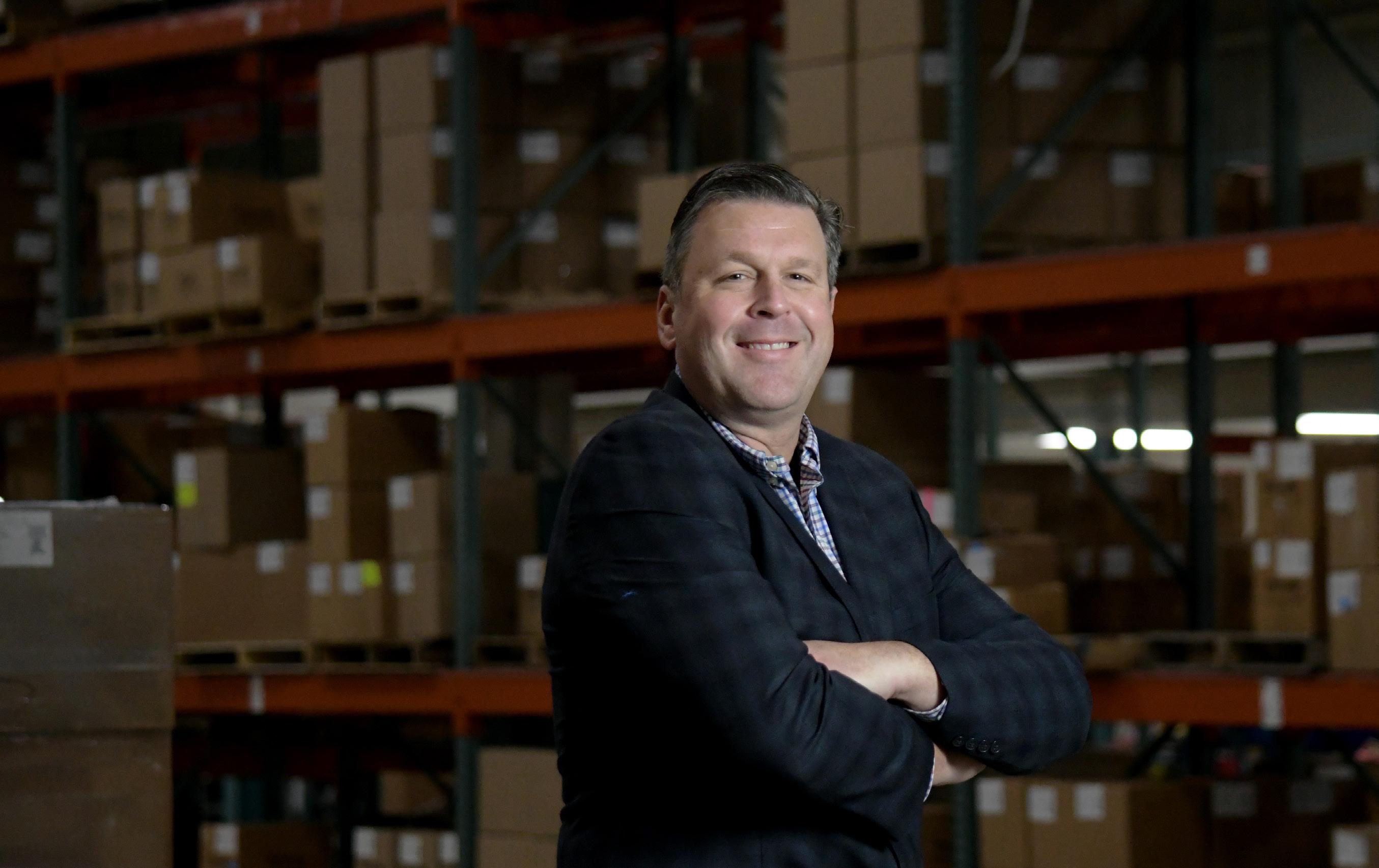
Treat people the way you want to be treated.

Wisconsin.
At companies across southeast Wisconsin, notable executives are running businesses, navigating company restructurings, serving on boards, running marketing departments, and investing in growth throughout the region. The notable individuals profiled in these categories are nominated by their peers at work and in the community.
Notable Leaders in Higher Education are credited with making the Milwaukee area’s colleges and universities world-class.


Nomination Deadline: December 16, 2022
Issue Date: January 23, 2023
Look for these Notable and Rising Stars nominations in 2023!
Notable BIPOC Executives
Nomination deadline: January 13, 2023 Issue date: February 20, 2023
Notable Women in STEM Nomination deadline: February 17, 2023 Issue date: March 27, 2023
Notable Women in Construction & Design Nomination deadline: March 10, 2023 Issue date: April 17, 2023
Notable Mortgage Brokers and Title Officers Nomination deadline: April 7, 2023 Issue date: May 15, 2023
Notable Nonprofit Board Leaders
Nomination deadline: April 28, 2023 Issue date: June 5, 2023
Notable Leaders in Accounting Nomination deadline: June 16, 2023 Issue date: July 24, 2023
Notable Alumni Nomination deadline: July 14, 2023 Issue date: August 21, 2023
Notable Leaders in Sustainability Nomination deadline: August 4, 2023 Issue date: September 11, 2023
Rising Stars in Manufacturing
Nomination deadline: September 1, 2023 Issue date: October 9, 2023
Notable Women in Insurance

Nomination deadline: September 15, 2023 Issue date: October 23, 2023
Notable Women in Hospitality Nomination deadline: October 13, 2023 Issue date: November 20, 2023
Notable Health Care Leaders Nomination deadline: November 3, 2023 Issue date: December 11, 2023

